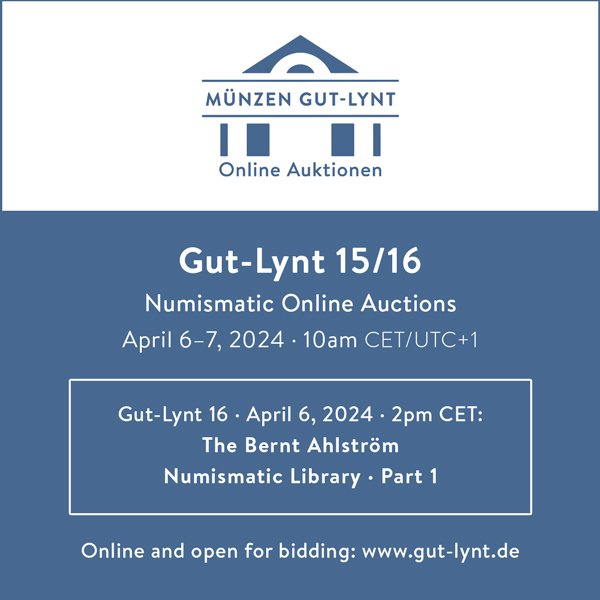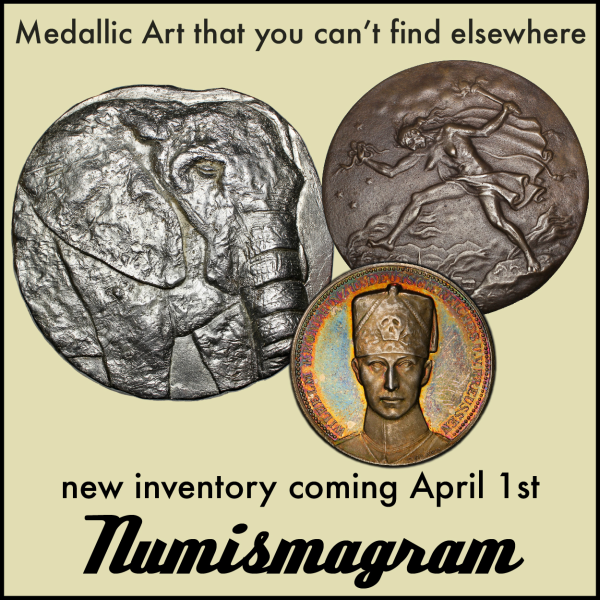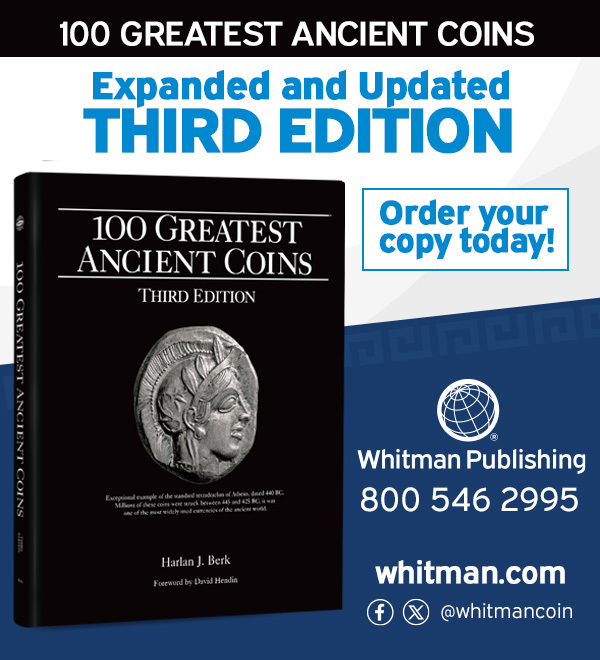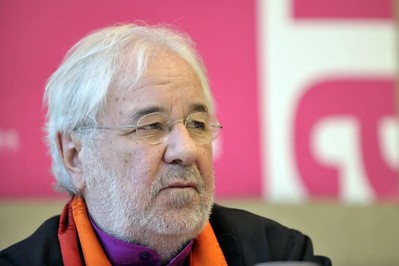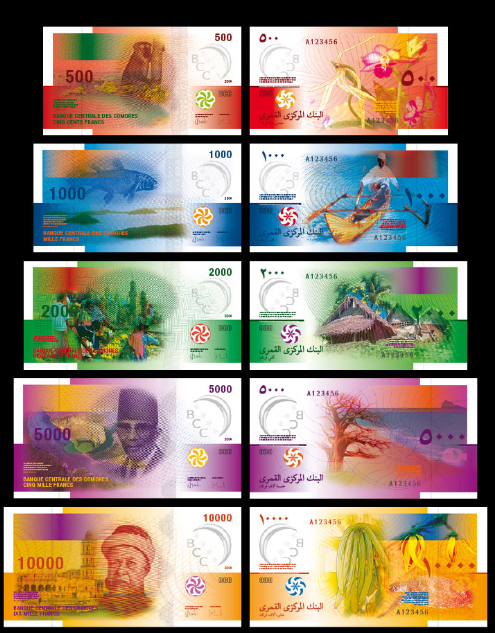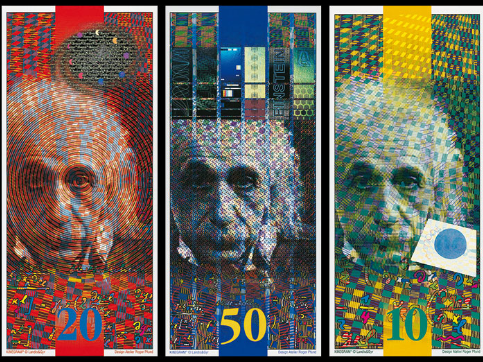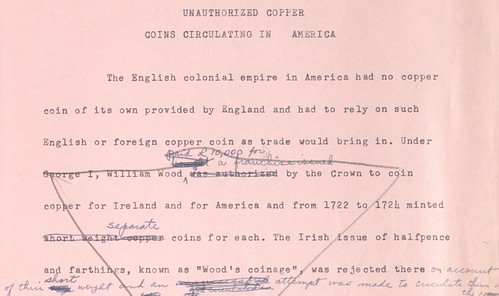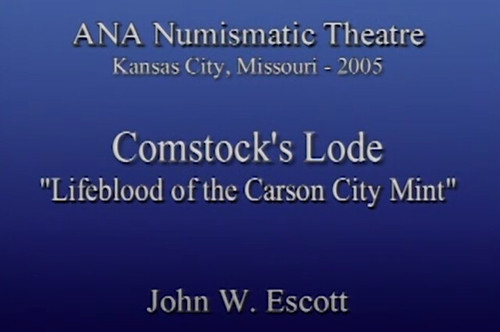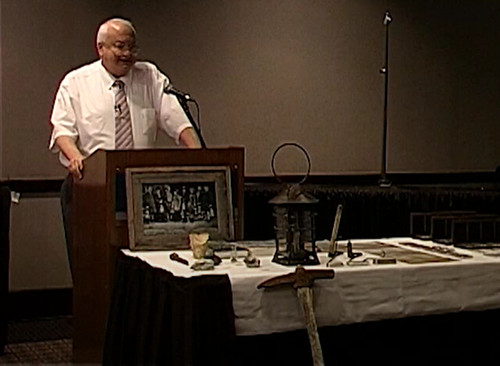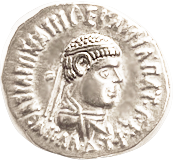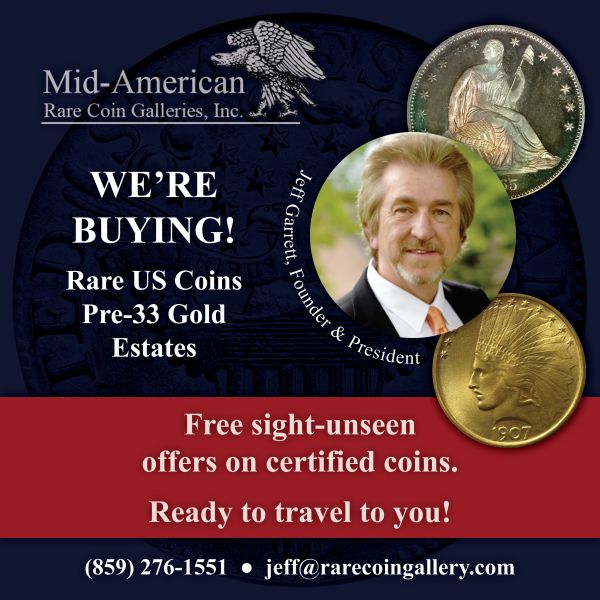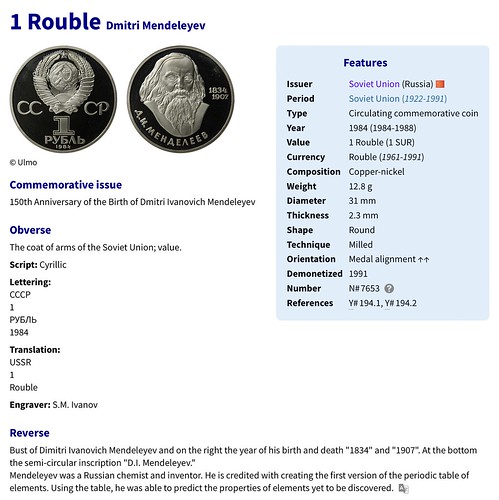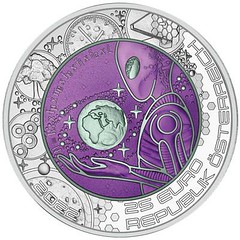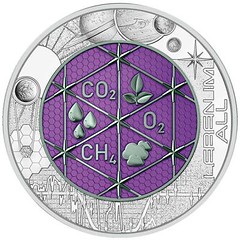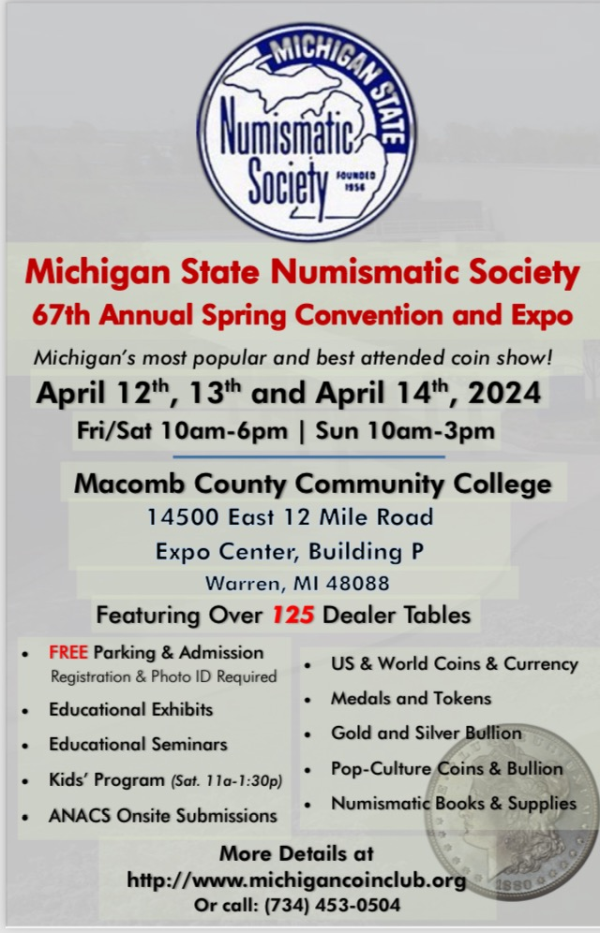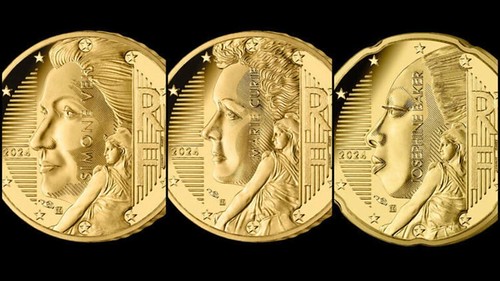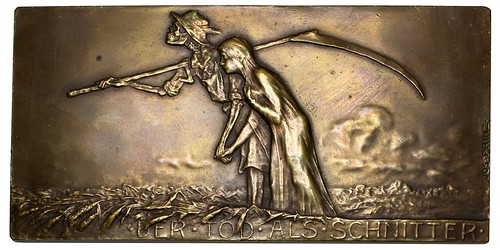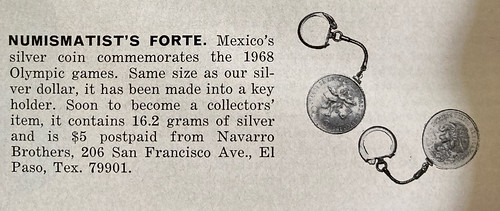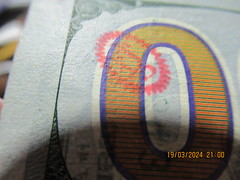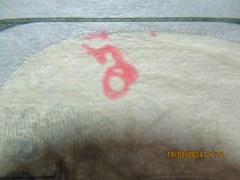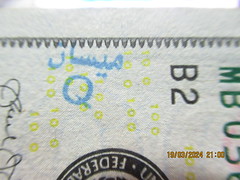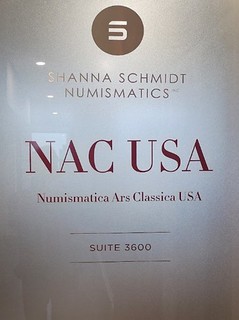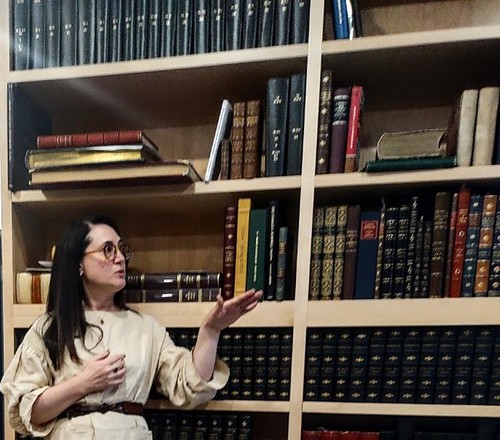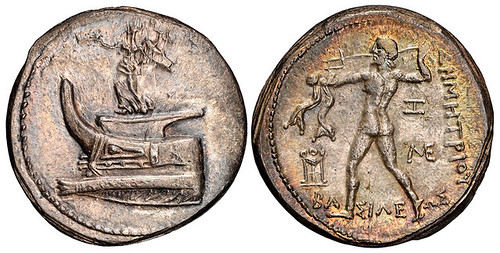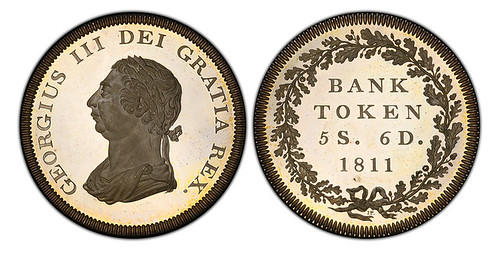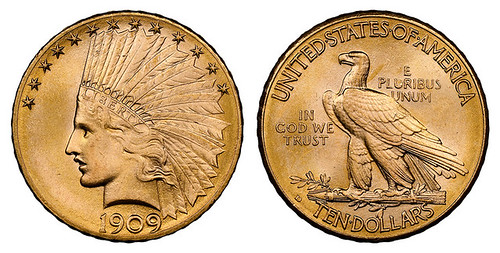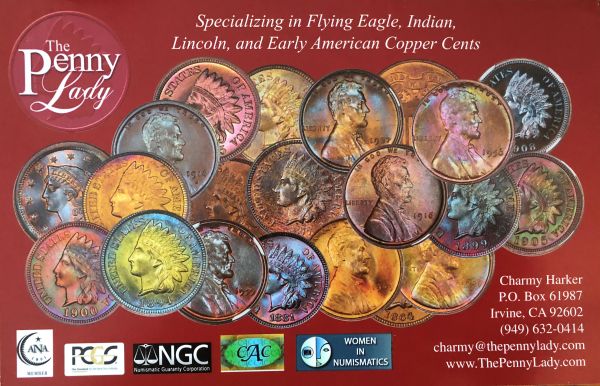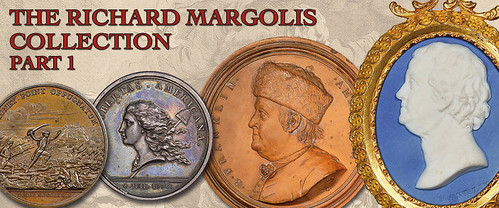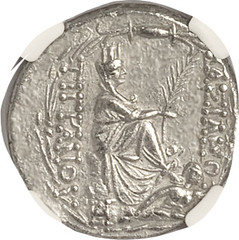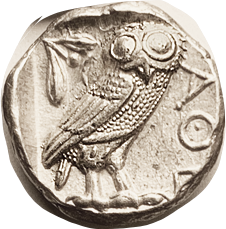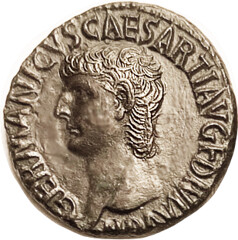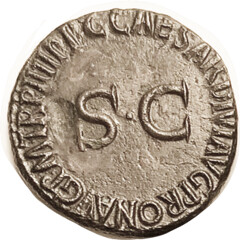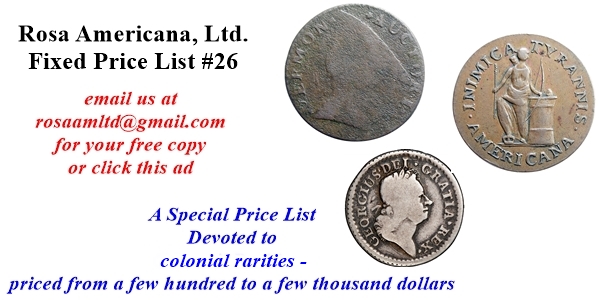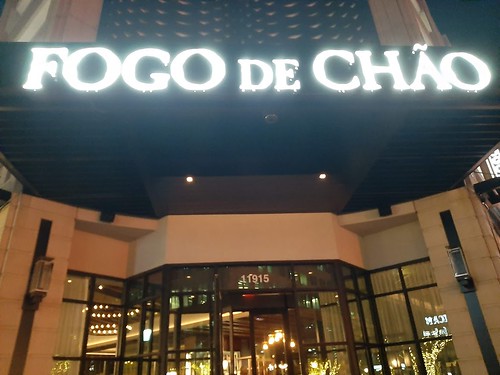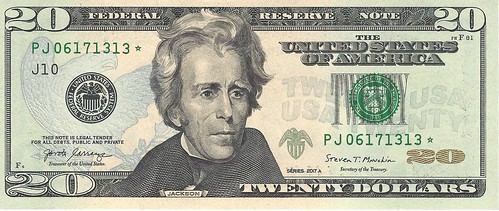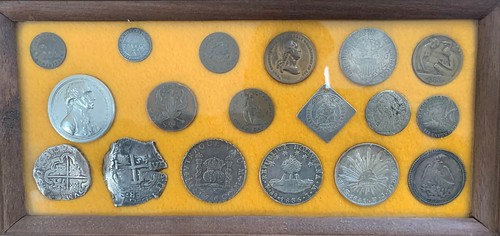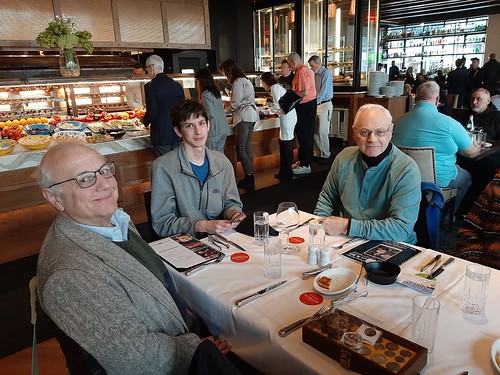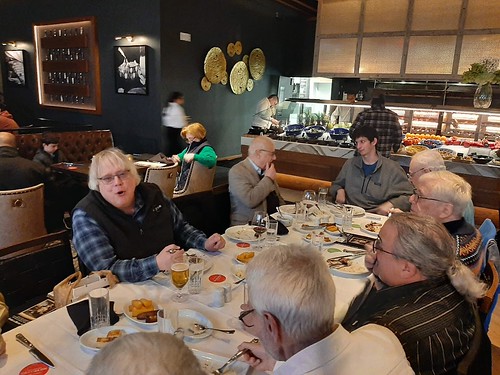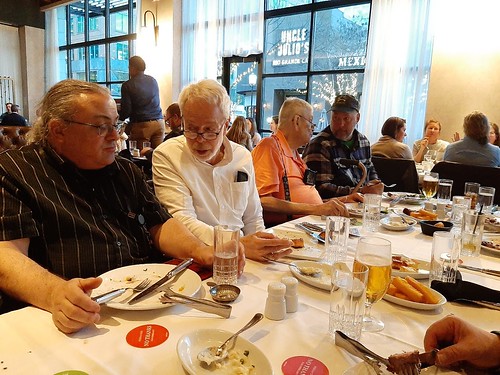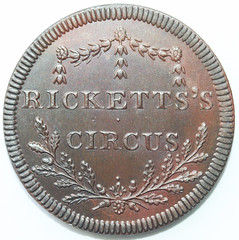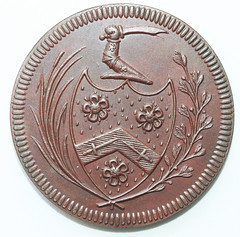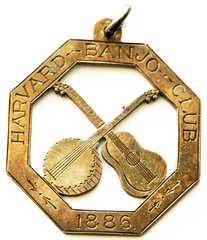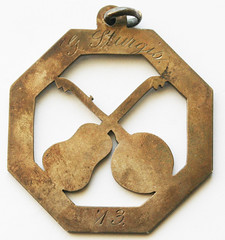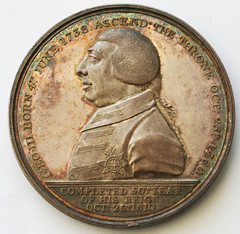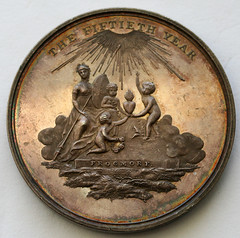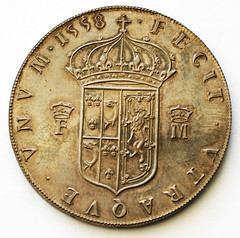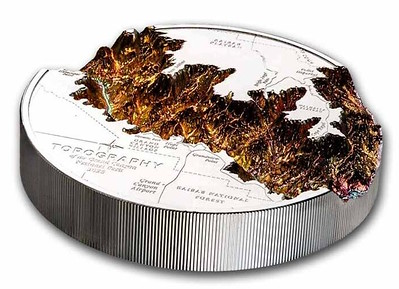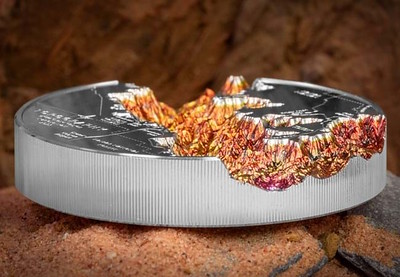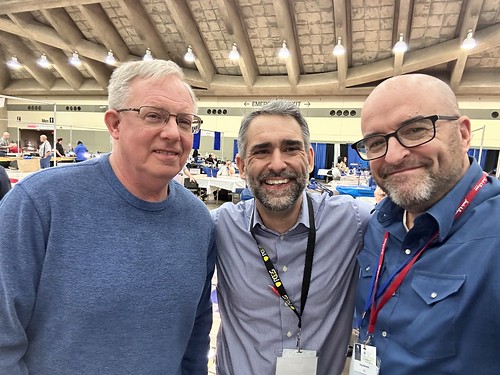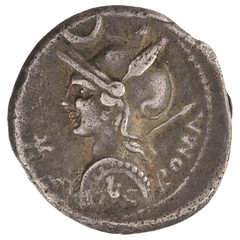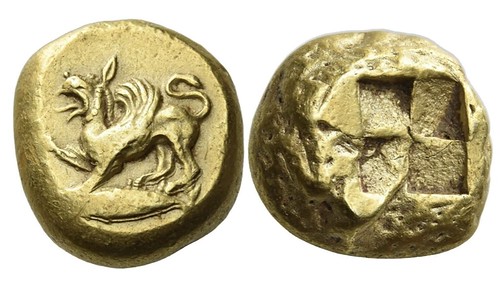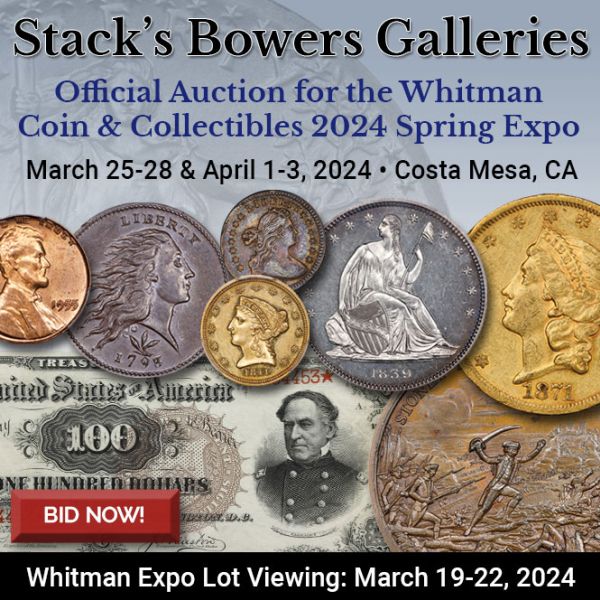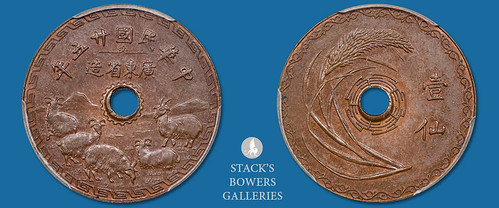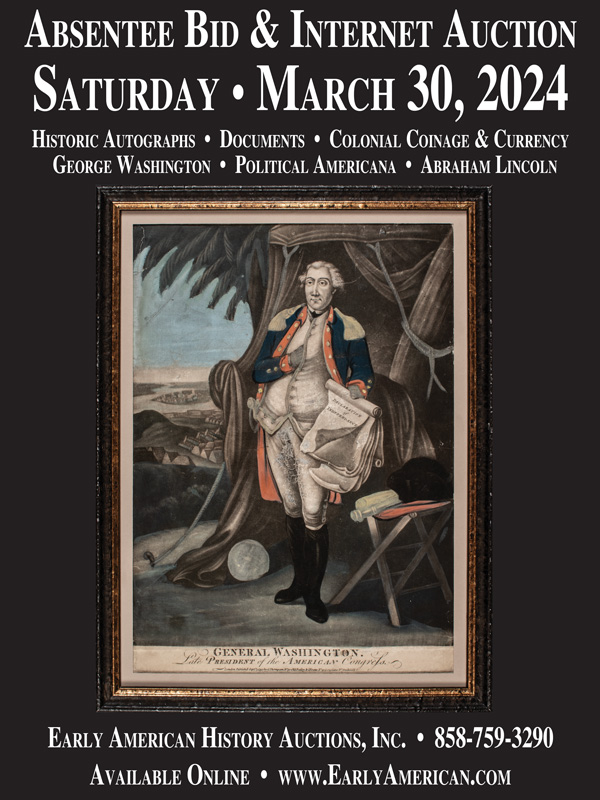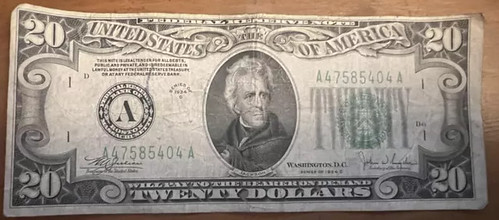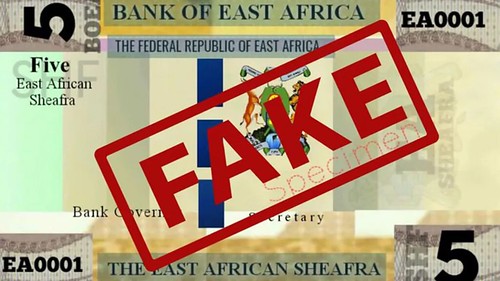
Visit our NBS Sponsors
About UsThe Numismatic Bibliomania Society is a non-profit association devoted to the study and enjoyment of numismatic literature. For more information please see our web site at coinbooks.org SubscriptionsThose wishing to become new E-Sylum subscribers (or wishing to Unsubscribe) can go to the following web page link MembershipThere is a membership application available on the web site Membership Application To join, print the application and return it with your check to the address printed on the application. Print/Digital membership is $40 to addresses in the U.S., and $60 elsewhere. A digital-only membership is available for $25. For those without web access, write to: Jeff Dickerson, Treasurer AsylumFor Asylum mailing address changes and other membership questions, contact Jeff at this email address: treasurer@coinbooks.org SubmissionsTo submit items for publication in The E-Sylum, write to the Editor at this address: whomren@gmail.com BUY THE BOOK BEFORE THE COINSale CalendarWatch here for updates! |
- WAYNE'S WORDS: THE E-SYLUM MARCH 24, 2024
- NEW BOOK: WONDERS OF MORGAN DOLLARS
- NEW BOOK: NUMISMATOGRAPHY (ANCIENT INDIAN)
- NEW BOOK: KAKATIYA COINS
- NEW BOOK: GUERNSEY PAPER MONEY
- BANKNOTE BOOK IONIAN ISLANDS CHAPTER PUBLISHED
- ORIENTAL NUMISMATIC SOCIETY SPRING 2024
- RICHARD V. PUNCHARD (1932-2024)
- ROGER PFUND (1943-2024)
- NEWMAN PAPERS ON COUNTERFEIT HALFPENCE
- VIDEO: COMSTOCK'S LODE
- ROBOTS WRITING COIN CATALOGS
- MORE CHEMISTRY ON COINS
- NOTES FROM E-SYLUM READERS: MARCH 24, 2024
- MORE CHOPS ON MODERN U.S. PAPER MONEY
- CHICAGO COIN CLUB MEETS AT S&S LIBRARY
- VOCABULARY TERMS: PHOTOETCHED, PHOTOETCHING
- ATLAS NUMISMATICS SELECTIONS: MARCH 24, 2024
- ON THE RICHARD MARGOLIS COLLECTION
- FRANK S. ROBINSON 124TH AUCTION
- THE BRUUN COLLECTION OF WORLD COINS
- WAYNE'S NUMISMATIC DIARY: MARCH 24, 2024
- BALLOT BOX ON ROMAN COIN
- GRIFFINS ON ANCIENT COINS
- THE KWANGTUNG
FIVE GOATS
CENT PATTERN - WWII GHOST ARMY CONGRESSIONAL GOLD MEDAL
- SERIES 1934 C $20 BILL TURNS HEADS
- THE EAST AFRICAN FIVE SHEAFRA
Content presented in The E-Sylum is not necessarily researched or independently fact-checked, and views expressed do not necessarily represent those of the Numismatic Bibliomania Society.
WAYNE'S WORDS: THE E-SYLUM MARCH 24, 2024
 Thank you for reading The E-Sylum. If you enjoy it, please send me the email addresses of friends you think may enjoy it as well and I'll send them a subscription. Contact me at whomren@gmail.com anytime regarding your subscription, or questions, comments or suggestions about our content.
Thank you for reading The E-Sylum. If you enjoy it, please send me the email addresses of friends you think may enjoy it as well and I'll send them a subscription. Contact me at whomren@gmail.com anytime regarding your subscription, or questions, comments or suggestions about our content.
This week we open with five new books, one periodical, two obituaries, updates from the Newman Numismatic Portal, and more.
Other topics this week include robots writing coin catalogs, chemistry on coins, chops on paper money, fixed price and auction offerings, the Bruun collection of world coins, griffins, the ghost army, and the East African five sheafra note.
To learn more about Morgan dollars, Guernsey paper money, Dick Punchard, Roger Pfund, counterfeit halfpence, the Comstock Lode, the plated Mougey sale, the S&S Library, photoetched medals, the Ricketts's Circus token, and the Five Goats
pattern, read on. Have a great week, everyone!
Wayne Homren
Editor, The E-Sylum
NEW BOOK: WONDERS OF MORGAN DOLLARS
Here's the announcement of a new book on Morgan Dollars by Leroy Van Allen. -Editor
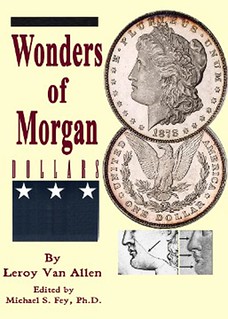 Wonders of Morgan Dollars
Wonders of Morgan Dollars
by Leroy C. Van Allen (Author), Michael Fey (Editor)
Format: Kindle Edition
This is to announce that the Wonders of Morgan Dollars by Leroy Van Allen is now in digital form on Amazon Kindle for only $9.95. It was edited by Michael S. Fey, Ph.D.
This is one of Van Allen's best references showing all the things that can differentiate common silver dollars from rare die varieties and errors. Indeed, you will be treated to numerous instances of die varieties features along with copious pictures illustrating the differences between the variety/error and a normal Morgan silver dollar. It features the authorization history, its appearance and availability among Morgan silver dollars as well as the history of famous hoards.
Among die varieties are accidental flaws such as date digit doubling, date position variations, mint mark doubling, design doubling, doubled ears, hub doubling, counter clash doubling, over polished dies, over buffed dies, die gouges and scratches, denticle impressions, and overlapping reeding. Intentional die flaws include date digit design and sizes, overdates, dashes below date, misplaced date digits, mint mark sizes, over mint marks, identifying dots, dual hub dies, engraved wing feathers, acid treated dies, 1921 scribbles and so much more.
Chapters on counterfeits, planchet errors, striking errors, and obverse and reverse design charts, reed counts, and rotated reverse dies make this an essential reference. This is one of the most popular references among Morgan silver dollar variety specialists and is a must read for every Morgan silver dollar collector, dealer, investor and enthusiast! You will never look at a Morgan silver dollar (or perhaps any other Type coin) the same.
For more information, or to order, see:
Wonders of Morgan Dollars Kindle Edition
(https://www.amazon.com/Wonders-Morgan-Dollars-Leroy-Allen-ebook/dp/B0CYD4VDVN/ref=sr_1_1)
NEW BOOK: NUMISMATOGRAPHY (ANCIENT INDIAN)
A new book by Shankar Goya has published a new book on the historiography of ancient Indian coinages. -Editor
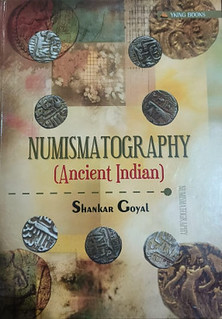 Numismatography (Ancient Indian)
Numismatography (Ancient Indian)
Shankar Goya;
The study of ancient Indian coins is now a well established discipline with a history of more than two centuries behind it. But strangely no work on its historiography has so far been published. The present full-length monograph on this subject is a pioneering study. It critically examines all the important works and research articles published during the last two hundred years or so.
Divided into eleven chapters it begins with the progress of the study of the problems of the origin and antiquity of coinage in india (ch. one) and is followed by the historiography of PMC, Local and Tribal Coins, Indo-Greek Coinage, Coinages of the Imperial Scythians and Pahlavas and the Western Kshatrapas and the Coinage of the Kushanas (chs. second to sixth). Then in the next four chs. the numismatography of the Satavahanas , the Guptas, the Vakatakas and the post-Gupta dynasties has been discussed. In the last and concluding ch. some miscellaneous aspects of ancient Indian numismatics, not covered in the study of the coins of various periods and dynasties, have been examined. Thus this monograph is at once a pioneering and comprehensive study of the historiography of ancient Indian numismatics.
ABOUT THE AUTHOR
Dr. Shankar Goyal (b. 1959), the young and ebullient author of the present monograph, is emerging very rapidly as one of the recognized authorities on the historiography of ancient India. He has already produced three monographs dealing with some aspects of ancient Indian history writing viz. History and Historiography of the Age of Harsha (Jodhpur, 1992), Aspects of Ancient Indian History and Historiography (New Delhi, 1993) and History Writing of Early India (Jodhpur, 1996). He has co-edited a number of works with such eminent scholars as Professors G.C. Pande, B. Ch. Chhabra and Jagannath Agrawal which are directly or indirectly concerned with this discipline, including Political History in a Changing World (Jodhpur, 1992), Reappraising Gupta History (New Delhi, 1992) and S.R. Goyal: His Multidimensional Historiography (New Delhi, 1992).
He has also-co-edited several other monographs with Shri M.C. Joshi and Dr. Sobhag Maghur which include King Chandra and the Meharauli Pillar (Meerut, 1989), Spectrum of Nehru's Thought (New Delhi, 1994) and Rajasthan Bharati, in two volumes (Jodhpur, 1995) and authored more than seventy research articles. His research output in a period of less than six years has been stupendous, and its originality and quality superb, as is evident from the reviews of his works appearing in national and international journals. Dr. Shankar Goyal did his graduation from the University of Rajasthan, Jaipur, post-graduation from the Deccan College, Pune, and Doctrate on Main Trends in Indian Historiography Since Independence from the University of Jodhpur, Jodhpur, where he is presently working as an Assistant Professor in the Department of History.
For more information, or to order, see:
Numismatography (Ancient Indian)
(https://www.bagchee.com/books/BB138167/numismatography-ancient-indian)
Numismatography (Ancient Indian)
(https://www.ibpbooks.com/numismatography-ancient-indian/p/60598)
NEW BOOK: KAKATIYA COINS
The Spring 2024 issue of the Journal of the Oriental Numismatic Society includes a review of this new book by Deme Raja Reddy. Here's some information from the publisher. -Editor
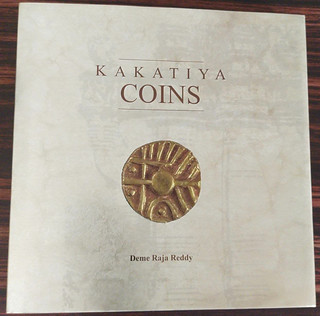 Step back in time to the medieval era of Deccan, India with "Kakatiya Coins: A Journey Through Medieval Deccan Numismatics." This comprehensive book takes readers on an enriching expedition through the fascinating world of coins minted during the Kakatiya dynasty, a prominent South Indian dynasty that ruled from the 12th to the 14th century. Delve into the captivating history, art, and culture of the Kakatiya dynasty through the lens of their coinage. The book offers a meticulous exploration of the coins issued by the Kakatiya rulers, showcasing their various denominations, types, inscriptions, and artistic motifs. From gold, silver, and copper coins to unique bull-and-horseman, stylized lions, and other intriguing designs, the coins of the Kakatiya dynasty reveal a rich tapestry of the dynasty's economic and cultural heritage.
Step back in time to the medieval era of Deccan, India with "Kakatiya Coins: A Journey Through Medieval Deccan Numismatics." This comprehensive book takes readers on an enriching expedition through the fascinating world of coins minted during the Kakatiya dynasty, a prominent South Indian dynasty that ruled from the 12th to the 14th century. Delve into the captivating history, art, and culture of the Kakatiya dynasty through the lens of their coinage. The book offers a meticulous exploration of the coins issued by the Kakatiya rulers, showcasing their various denominations, types, inscriptions, and artistic motifs. From gold, silver, and copper coins to unique bull-and-horseman, stylized lions, and other intriguing designs, the coins of the Kakatiya dynasty reveal a rich tapestry of the dynasty's economic and cultural heritage.
Featuring stunning photographs, detailed descriptions, and historical insights, this book is a treasure trove for numismatists, history enthusiasts, and collectors alike. Learn about the diverse coinage system of the Kakatiyas, their trade relations, and the evolving coin designs that reflect the dynasty's rise and fall. Unravel the mysteries of minting techniques, legends, and symbols, and gain a deeper understanding of the socio-political landscape of medieval Deccan.
Publisher : Kakatiya Heritage Trust (1 January 2023)
Language : English
Hardcover : 90 pages
ISBN-10 : 8192707202
ISBN-13 : 978-8192707204
Reading age : 3 years and up
Item Weight : 640 g
Country of Origin : India
For more information, or to order, see:
KAKATIYA COINS Hardcover – 1 January 2023
(https://www.amazon.in/KAKATIYA-COINS-Deme-Raja-Reddy/dp/8192707202/ref=sr_1_5)
NEW BOOK: GUERNSEY PAPER MONEY
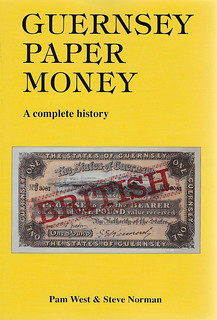
A new book by Pam West and Steve Norman on Guernsey paper money has been published. -Editor
- Guernsey Paper Money catalogue
- 488 full colour priced pages
- many previously unseen banknotes
- Printed by Halstan
- Recorded in UK
- PRICE: £25.00 + £5 p&p
For more information, or to order, see:
http://www.britishnotes.co.uk/?page=stock_item&categoryid=18&stockid=75895
BANKNOTE BOOK IONIAN ISLANDS CHAPTER PUBLISHED
A new chapter of The Banknote Book has been published by Whitman-CDN. Written by Tristan William and Owen Linzmayer, the 7-page catalog covers 49 varieties of notes from the Ionian Bank from 1840 – 1890. -Editor
To read the complete article, see:
United States of the Ionian Islands chapter now available
(https://banknotenews.com/?p=43346)
ORIENTAL NUMISMATIC SOCIETY SPRING 2024
The Spring 2024 issue of the Journal of the Oriental Numismatic Society has been published. -Editor
 Journal of the Oriental Numismatic Society
Journal of the Oriental Numismatic Society
Spring 2024
CONTENTS
Editorial
Paula Turner
A Hoard Parcel of Early Elymaean and Parthian Bronze Coins
Anran Mao, Patrick Pasmans and Haoyu Sun
A Unique City State Coin from Punjab
Gurcharn Singh
Examining the Historical Significance of a Newly Discovered Coin of Western Ksatrapa Prthivisena
Aditya Ashtekar
Mainland Southeast Asia's Foundational Coinage: Observations on conch/srivatsa, class A coins (Mahlo 15) from southern Myanmar (Burma)
Robert S. Wicks
Gold Coins of the Hindu Srhi King Bhimadeva
Shailendra Bhandare
An Enigmatic Coin: A paisa of Sher Shah Suri?
Aman ur Rahman
Helen Wang: An appreciation Joe Cribb
ONS News
Book reviews and notices
The book reviews in this issue alerted me to a recent publication - see the article elsewhere in this issue about Kakatiya Coins: A Journey Through Medieval Deccan Numismatics. -Editor
For more information, see:
https://www.orientalnumismaticsociety.org/
RICHARD V. PUNCHARD (1932-2024)
E-Sylum Feature Writer and American Numismatic Biographies author Pete Smith submitted this remembrance of Dick Punchard. Thanks! -Editor
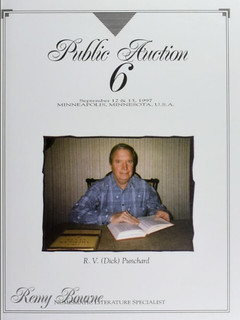 On November 6, 1976, I bought a 1793 large cent (Sheldon 11-c) at a local coin show. The dealer
asked me if I knew the guy carrying the book. He described the man as always carrying a copy of
Penny Whimsy at coin shows. He assembled much of his collection by finding unattributed
varieties. I found that man and introduced myself. He was Dick Punchard.
On November 6, 1976, I bought a 1793 large cent (Sheldon 11-c) at a local coin show. The dealer
asked me if I knew the guy carrying the book. He described the man as always carrying a copy of
Penny Whimsy at coin shows. He assembled much of his collection by finding unattributed
varieties. I found that man and introduced myself. He was Dick Punchard.
I showed the coin to Dick and he asked me if I was a member of Early American Coppers. I was not. He said that he invited members to his home, and if I joined, he would invite me. It took a while but my name was proposed for membership in the November 1978 issue of Penny-Wise. My first EAC convention was in January 1979 in Cocoa Beach, Florida.
I don't recall when I first visited Dick at home. I do recall being impressed with his library. He had more auction catalogs than I had ever seen before. He also had a box of index cards where he kept track of sales of the rare large cents. He liked to trace the pedigrees of his coins and identify previous sales.
I was also impressed with Dick's group of 1793 cents. He had all the Sheldon varieties except the Sheldon-7, a coin he never acquired. He was also proud of his 1794 cents long before I learned to appreciate them.
Dick invited a number of collectors to his house back then. One of the regulars was William Weimer from Rochester. He had sold coins at auction in 1976 and was working on a second collection.
Dick became my mentor for collecting large cents and also instructed me on the culture of EAC. I began to understand why collectors identified coins by the pedigree of past owners. During 1980 to 1989, I travelled with Dick to several EAC conventions, a couple of ANA conventions and three California auctions.
Dick was always a step ahead of me with the Numismatic Bibliomania Society. He joined as a charter member and I came in too late. He got me to attend an NBS meeting at ANA in Cincinnati in 1980 where John J. Ford entertained the audience. In 1982 he told me about a guy who had opened a numismatic book store in Northeast Minneapolis. We were together for the 1983 ANA convention in San Diego and attended a Cal Wilson auction. Dick served on the NBS Board for 1984 to 1987.
Richard V. Punchard was born in Minneapolis on December 27, 1932. I don't recall that he ever mentioned his parents. Records show that he was the son of Richard C. Punchard (1912-1981), a retired railroad worker, and Marie Victoria Olson Punchard (1905-1996). Both are buried at Lakewood Cemetery in Minneapolis, the resting place of A. M. Smith and William K. Lanphear.
Dick served in the U. S. Army during 1953 to 1955. He occasionally talked about his service in Korea after the war. After attending the University of Minnesota, he went into business as a heating and air conditioning contractor. He was the owner of Key Metalcraft.
Dick was married to Lorraine May Punchard with two sons and a daughter. She was a collector of children's furniture and dishware, a collection that took up more space in the basement than Dick's coin collection. She was the author of several books on the topic. Their son Neal has written books about collectible knives.
In 1964. Dick had the opportunity to buy a group of U. S. large cents for $300. He started to assemble a date set and studied the rest for varieties. He joined EAC in 1973 and attended his first EAC convention in New York City in 1974. The first two people he met were Ted Naftzger and Walter Breen. They were very friendly and welcoming.
Dick had a special interest in die states, an interest he shared with Fred Borcherdt. He mentioned LC167, published by W. E. Johnson in the 1960's. It was a guide to known middle date die states.
I developed an interest in die states of the Turban (Classic) head cents. Dick and I compared the coins in our collections and identified various die states. When Wes Rasmussen came along, we examined his coins. The three of us put together an exhibit for one of the EAC conventions.
In 1983, Dick decided to break up his early date set, beginning with the 1793's. He gave me the first chance at any of his that I wanted. By then, I had acquired six of the 18 1793 varieties. I bought his Sheldon 8, 9, 10, 11-a, and S-14.
Dick had a low-grade S-15 in FR2 among the coins offered. I examined it very closely and just couldn't see the diagnostic marks. I thought I might never get a better chance to own an S-15, but for the money it cost, I wanted to see enough diagnostics to appreciate the variety. Not buying that coin is a decision I have never regretted.
By 1986, Wes Rasmussen had become an active member of the Minnesota EAC group. He was buying mint state large cents while Dick and I were working with VF-20 to XF-40 coins. I became a domino collector. Wes would buy a high-grade coin and sell his lower grade piece to Dick. Dick would sell his lower grade piece to me. There was no one around to buy my dominoes.
Dick, Wes and I became travelling companions for the 1986 Van Cleave sale, the 1986 Robbie Brown sale and the 1989 Jack Robinson sale. We often hooked up with Bob and Tom Matthews from Michigan at these sales.
In 1986 I was the underbidder when Jim Neiswinter bought the Phil Van Cleave S-15. He was the rightful owner of that coin. Seven months later I bought Robbie Brown's first S-15. Dick sold his S-15 to Robbie Brown for his second set that sold at auction in 1996. It remains in the S-15 census with an attribution that remains questionable.
Dick hosted a meeting at his home on October 29, 1988, with ten people in attendance. This is the largest gathering I can recall. Those present included Bill Daehn, Steve Hustad, Gene Jansen, Marie Munson, Frank Noel. Dick Punchard, Wes Rasmussen, John Saffert, Pete Smith and Bill Woytasek.
Dick also enjoyed collecting cars from his birth year, especially 1932 Fords. I recall he found a well preserved one out east and brought it back to Minnesota on a trailer. He showed that car at some car shows but found he didn't particularly enjoy talking to all the people who came to him with questions.
Dick consigned his library to Remy Bourne for auction on September 12-13, 1997. His timing was good and there was still a market for large cent auction sale catalogs. In a few years that market would be severely reduced by the Newman Numismatic Portal. Fourteen people attended the sale including six staff people and the consignor. There were two out-of-town bidders and five locals.
Dick retained an interest in numismatics of the Civil War period. He was an active collector of fractional currency. There is a Civil War token from Minnesota issued by watchmaker D. C. Greenleaf. These come with numbers on the back. All Minnesota Civil War tokens are rare and expensive. Dick had some ridiculous number of the Greenleaf pieces with different numbers.
 Punchard compiled G. A. R. Grand Army of the Republic Minnesota Department An Illustrated
History published in 2016. The book is lavishly illustrated with photos from 192 G. A. R. posts
in Minnesota and the many reunions held in the state. Dick visited 37 county museums plus the
Minnesota Historical Society to gather material for the book.
Punchard compiled G. A. R. Grand Army of the Republic Minnesota Department An Illustrated
History published in 2016. The book is lavishly illustrated with photos from 192 G. A. R. posts
in Minnesota and the many reunions held in the state. Dick visited 37 county museums plus the
Minnesota Historical Society to gather material for the book.
Dick had a table at our local coin show as recently as 2019 to promote the collection of fractional currency. We talked on the phone occasionally in recent years. I understand his health was failing in the last year and he died on January 6. There will be a private memorial service and internment at Fort Snelling National Cemetery later this spring.
To read the Bourne sale of the Punchard Library on the Newman Numismatic Portal:
https://nnp.wustl.edu/library/auctionlots?AucCoId=510371&AuctionId=513014
To read the earlier E-Sylum article, see:
DICK PUNCHARD IS ALIVE AND WELL
(https://www.coinbooks.org/v20/esylum_v20n05a05.html)
ROGER PFUND (1943-2024)
Swiss banknote artist Roger Pfund has passed. -Editor
In Switzerland Roger Pfund is perhaps best known for his innovative, colourful designs for the Swiss passport, introduced in 2003. His idea was for each of the 26 cantons to have its own page with a coat of arms and a landmark.
But his speciality was banknotes, both Swiss and foreign. His modern use of colour, traditional images and computer technology ushered in a new era for currency design.
Born in Bern on December 28, 1943, to Swiss and French parents, Pfund started out as a jazz musician, playing double bass in a jazz trio. But an interest in art led to an apprenticeship with the graphic designer Kurt Wirth in Bern in 1966. He later set up his own studio in the Swiss capital, before moving to Geneva where he developed his business.
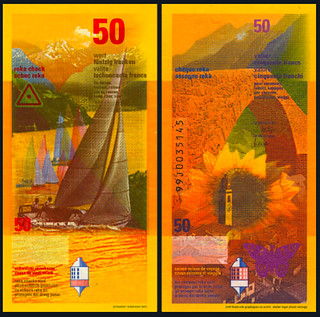 The unknown artist's career took off in 1971 when he was invited to design a new series of notes for the Swiss National Bank (SNB). His designs were for the 1984 seventh reserve series and were not actually used. They were kept in the SNB vaults and would have been used if existing notes in circulation had been counterfeited on a mass scale.
The unknown artist's career took off in 1971 when he was invited to design a new series of notes for the Swiss National Bank (SNB). His designs were for the 1984 seventh reserve series and were not actually used. They were kept in the SNB vaults and would have been used if existing notes in circulation had been counterfeited on a mass scale.
But his design work led to growing fame, and some of his foreign banknotes did make it into circulation. These included the last series of French franc bills in the 1980s before the switch to the euro, one of which featured Antoine de Saint-Exupéry's Little Prince character, and the Argentinian notes with Eva Evita
Peron, the former first lady of Argentina, activist and actress.
He went on to win two competitions organised in 1996 by the European Monetary Institute (EMI) to design the new euro banknotes. But some felt his versions were too avant-garde, and the project was finally handed to the Austrian Robert Kalina.
With his vast knowledge of currency design and security techniques, Pfund became an important adviser for central banks such as the SNB.
When it came to graphic design, he seemed to be able to turn his hand to almost anything: posters and books, Swiss stamps, Swiss REKA checks (a community currency), Credit Suisse debit cards and even tax return documents.
To read the complete article, see:
Obituary: influential Swiss graphic artist Roger Pfund
(https://www.swissinfo.ch/eng/culture/obituary-influential-swiss-graphic-artist-roger-pfund/73854674)
For more information, see:
https://rogerpfund.com/about
https://rogerpfund.com/security-design
NEWMAN PAPERS ON COUNTERFEIT HALFPENCE
Newman Numismatic Portal Project Coordinator Len Augsburger provided the following report. Thanks. -Editor
The Newman Papers on Counterfeit Halfpence
Concluding tomorrow (March 25), Heritage Auctions is presenting Selections from the Eric P. Newman Correspondence Files, an offering of 97 lots of research papers on various topics. Lots 52021-52024 highlight Newman's work on counterfeit halfpence, including the Machin's Mills coinage. Newman had a strong interest in both colonial coinage and counterfeits, and the intersection of the two topics clearly enjoyed much of his attention. Still, the counterfeit halfpence represented Newman's white whale,
a subject that greatly interested him but never led to a broad, definitive publication.
As early as 1953, Newman envisioned a comprehensive work on the Machin's Mills coinage, which he noted in correspondence with his brother-in-law Julian Edison on September 21 of that year. On January 4, 1956, Newman wrote to Wayte Raymond that he had visited the Machin's Mills site near Newburgh, NY. A February 9, 1959, letter to Kenneth Rendell further detailed Newman's work on the subject: My work on the Machin's Mills has been continuing for ten years or more. It is the most complex situation I have ever run in to. I have been combing newspapers, records, books, and hundreds of British halfpence for years and I still do not know all the answers. If you read my article in the A.N.S. Centennial publication [1958] on the Vermont matter you will get an inkling of the Machin's Mills complications.
On November 17, 1964, Newman wrote to Howard Kurth The matter of counterfeit halfpence has been a subject to which I have been devoted for twenty years and I think I have enough data to produce something worthwhile which will explode all the theories on Bungtown and other matters of speculation.
On January 26, 1973, Newman lamented to Colonial Newsletter editor James C. Spilman: I have all this data assembled and all I need is time to work on it.
Included in the present offering, lot 52022, is Newman's unpublished draft, c. 1960, on counterfeit halfpence circulating in colonial America. Newman's most significant published work on the subject appeared in the 1976 American Numismatic Society volume Studies on Money in Early America under the title American Circulation of English and Bungtown Halfpence.
Newman's article file for that work appears here as lot 52023.
Image: Initial page, with markup, of Newman's c. 1960 draft, Unauthorized Copper Coins Circulating in America
Link to the Newman Correspondence Files Showcase Auction sale home page:
https://coins.ha.com/c/auction-home.zx?saleNo=63247&ic=breadcrumb-coins-121913-interior
VIDEO: COMSTOCK'S LODE
The David Lisot Video Library on the Newman Numismatic Portal can be found at:
https://nnp.wustl.edu/library/multimediadetail/522852
We highlight one of his videos each week in The E-Sylum. Here's one from 2005 about silver mining and the Comstock Lode. -Editor
A brief history of the Comstock Lode and the famous mines that defined silver mining in the United States. It was this silver find that necessitated the creation of the Carson City Mint.
Speaker(s): John W. Escott.
To watch the complete video, see:
Comstock's Lode
(https://nnp.wustl.edu/library/book/557171)
ROBOTS WRITING COIN CATALOGS
In his blog The Rational Optimist, Frank Robinson discusses artificial intelligence and its use in numismatic cataloging. -Editor
 The core shtick of Artificial Intelligence (AI) is writing, and it's widely taking that over from humans. This was part of the story with the recent Hollywood writers strike. Amazon now limits how many books an author can post per day. Because people are using AI to write them — producing books in seconds.
The core shtick of Artificial Intelligence (AI) is writing, and it's widely taking that over from humans. This was part of the story with the recent Hollywood writers strike. Amazon now limits how many books an author can post per day. Because people are using AI to write them — producing books in seconds.
I also write my coin auction catalogs, briefly describing the items and their quality. Trying to inject occasional humor, I thought to have one entry written by ChatGPT. Given just my barebones listing, it went to town!
BAKTRIA, This captivating Drachm from the reign of Apollodotos II showcases the artistic prowess of the Bactrian mint, circa 110-80 BC. The obverse features a striking diademed head facing right, reminiscent of classical Greek numismatic traditions, while the reverse portrays Athena standing left, holding a spear and resting her hand on a shield. Exceptionally Fine (EF), centered with full legends, this specimen exhibits an unusually high level of detail and preservation. The surfaces gleam with bright metal, enhancing the aesthetic appeal and ensuring its status as a standout piece in any collection.
Noteworthy is the strong, detailed portrait of Apollodotos II, a testament to the skill of the ancient craftsmen. It is rare to encounter such exceptional quality in coins of this era, making this offering particularly desirable to discerning collectors. A Choice EF/VF specimen realized an impressive $351 on a $386 bid in our last auction, highlighting the enduring demand for coins of this caliber. Don't miss the opportunity to add this superb Drachm from Bactria's rich numismatic heritage to your collection. Bid now to secure this remarkable piece of history.
Note that some details, like the spear and shield, did not come from me; ChatGPT found them elsewhere. And the loquacious puffery resembles not my terse style but some big-time catalogs, notably those of Heritage Auctions. Seems ChatGPT is an aficionado of those sales. Or is it used by Heritage to write its catalogs?
The current versions of ChatGPT likely picked up their cataloging style from both coin catalogs and other sales-oriented pages across the internet. But in the future, as more cataloguers lean on AI for drafting (or even writing!!) entries, the process will feed on itself like a snake eating its own tail, to the point where no one will know whether the chicken or egg came first. -Editor
To read the complete article, see:
Fun With Artificial Intelligence
(https://rationaloptimist.wordpress.com/2024/03/22/fun-with-artificial-intelligence/)
MORE CHEMISTRY ON COINS
Last week David Levy asked about coins showing chemical elements or chemistry concepts. Here's what readers came up with. Pabitra Saha offered this Russian 1 Rouble picturing chemist and periodic table inventor Dimitri Mendeleyev. -Editor
Lorne LaVertu writes:
"The Austrian Niobium coins issued yearly denotes several chemistry equations on their 2022 Extraterrestrial
25 Euro coin."
Mark Verbeck writes:
"There is a 1967 10 Zlotys coin of Poland, 28 mm., copper-nickel, honoring Marie Sklodowska-Curie. These were struck for circulation, and are listed on a website for $3. Y-59
"A French 500 Francs banknote depicts Marie and Pierre Curie, with Pierre somewhat in the background. The reverse shows a lab scene. These may have been issued in several series. The colors are quite attractive. Pick #160
"The Royal Mint issued a 50 Pence commemorative coin to honor the centennial of Rosalind Franklin's birth. These were available in gold and silver, but also as circulation strikes. The coin features an impression intended to represent her crucial Photograph 51 in the discovery of the DNA double helix. It doesn't compensate for missing out on a share of the Nobel Prize, but it's something.
"Russia honored Dmitri Mendeleev, creator of the first periodic table of elements, on a 2 Rubles coin in 2009. The commemorative side has a fairly attractive portrait and five chemical symbols with atomic numbers. The other side, listed as the obverse, shows the stereotypical Russian eagle and inscription. These are 0.925 silver, 17 grams, and don't seem to sell for much more than bullion value. A 1984 Ruble commemorates the 150th anniversary of Mendeleev's birth. Copper-nickel, 31 mm., mintage nearly 2 million, Y-194.1."
Thanks, everyone. I'm sure many others would turn up in a more extensive search, and there would be additional pickings in the field of medals. Nobel Prize for Chemistry, perhaps? -Editor
To read the earlier E-Sylum articles, see:
AWARD MEDALS OF GEORGE DE HEVESY OFFERED
(https://www.coinbooks.org/v20/esylum_v20n48a20.html)
NOTES FROM E-SYLUM READERS: MARCH 17, 2024 :
Chemistry on Coins
(https://www.coinbooks.org/v27/esylum_v27n11a14.html)
NOTES FROM E-SYLUM READERS: MARCH 24, 2024
Numismatic Theater
Roger Siboni writes:
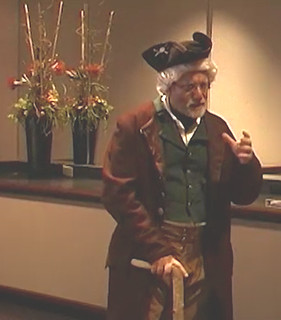 "Don Kagin is certainly a big personality in numismatics. But I think his Colonial Man is his theatrical apex. I have seen him perform this several times modifying it here and there for the right theme. Coinage, paper money, Mass Silver etc.
"Don Kagin is certainly a big personality in numismatics. But I think his Colonial Man is his theatrical apex. I have seen him perform this several times modifying it here and there for the right theme. Coinage, paper money, Mass Silver etc.
"I once asked him to perform this at one of our earlier C-4 Conventions and he made a cross country trip (on his own Shilling) to Boston to bring down the house.
"I have seen Dave Menchell do a few very humorous and clever Colonial related skits. But it seems to be a dying art in numismatics. I think Don also does one for Pioneer Gold. Are there others out there currently? A really fun way to educate and experience the mixed talents of our numismatic colleagues."
I've seen Don's "Oldest Living Pioneer" skit, and thought it was marvelous. Pat McBride brings Ben Franklin to life at coin shows around the country, with portrayers of Washington and Lincoln on hand as well. Here's hoping some of the younger generation of numismatists take up this mantle going forward. C'mon, it's fun! -Editor
To read the earlier E-Sylum article, see:
VIDEO: DONALD KAGIN AS COLONIAL MAN
(https://www.coinbooks.org/v27/esylum_v27n11a11.html)
Plated Mougey Sale
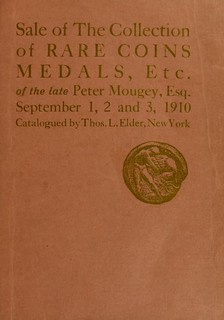 Dave Hirt writes:
Dave Hirt writes:
"I really enjoyed the post on Peter Mougey. He had such a wonderful collection that I believe is not appreciated enough. My notes also say that when sold, the collection was the property of William Woodin. I own three copies of that sale. Two are the regular edition, One is the special plated edition, with 42 plates! Mine is housed in a special book box, the same color as the catalog cover. I wonder which were the coins that Woodin pulled to add to his collection?"
Can anyone answer that question? -Editor
To read the earlier E-Sylum article, see:
PETER MOUGEY (1842-1908)
(https://www.coinbooks.org/v27/esylum_v27n11a17.html)
On the Redesigned Euro Coins
"Not one and two cent coins but one and two Euro coins were redesigned in 2022."
Correct - good catch. That was in the original article we quoted. -Editor
To read the earlier E-Sylum article, see:
LOOSE CHANGE: MARCH 17, 2024 : Women on France's New Euro Coins
(https://www.coinbooks.org/v27/esylum_v27n11a31.html)
Josef Prinz plaquette Information Sought
"I am seeking information about the plaquette in the attached photo.
"Josef Prinz. (1910?). •DER •TOD •ALS• SCHNITTER• (Death as reaper). Single-sided, struck bronze, olive-brown patina, 39 x 79 mm. Precisely what I am seeking is the original citation for the publication and illustration of this piece: Mitteilungen der Österreichischen Gesellschaft für Münz und Medaillen, Wien 1905 - 1918: 1910, p. 52.
"The reference to this citation appears in Strzalkowski, Jacek. 2000. Lexikon deutschsprachiger Medailleure und ihrer Werke in der ersten Hälfte des 20. Jahrhunderts. Lódz, p. 178.
"The original citation is in an obscure Austrian journal to which I cannot find online access, nor can I find any copies for sale. If any reader has access to that issue of the journal and could send me a scan of the relevant page, either through the E-sylum or to my direct email todd.trey@gmail.com, I would be most grateful."
Can anyone help? -Editor
1968 Mexico Olympics Silver Coin Keychain
David Luftig passed along this item from the September 1968 Esquire magazine. Thanks. Anyone got one of these babies? -Editor
Sanborn Fire Insurance Maps
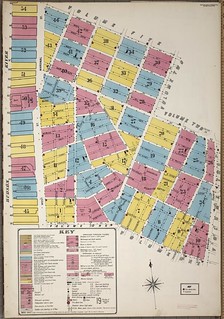 Andrew Pollock writes:
Andrew Pollock writes:
"I don't know if anyone has run across this Library of Congress resource. I think it might be useful for national bank research, but would there be other numismatic applications?"
Thanks. Maps can be useful for locating businesses issuing tokens, medals and scrip. They can also help narrow the timeframe of the business, and give clues to neighboring businesses. Worth checking. -Editor
To read the earlier E-Sylum article, see:
Sanborn Maps
(https://www.loc.gov/collections/sanborn-maps/)
MORE CHOPS ON MODERN U.S. PAPER MONEY
Kavan Ratnatunga of Sri Lanka writes:
"I withdrew some US$ from the bank for travel and found these chop marks.
"There were notes from 2009A, 2013, and 2017A. However, all but one of these chops were on 2009A notes and the other from 2013. So perhaps the chop is no longer used or the newer notes have not circulated enough to pick up a chop.
"I was prevented from scanning them by the Cannon LIDE 300."
Thanks! Here are the chop images Kavan was able to provide. Great variety. -Editor
To read earlier E-Sylum articles, see:
CHOPS ON UNITED STATES NOTES
(https://www.coinbooks.org/esylum_v11n15a12.html)
STAR STAMPS ON PAPER MONEY: MODERN CHOP MARKS
(https://www.coinbooks.org/esylum_v11n36a10.html)
QUERY: MODERN CHOPMARKS ON PAPER MONEY
(https://www.coinbooks.org/esylum_v11n48a11.html)
CHOPMARKS ON MODERN U.S. PAPER MONEY
(https://www.coinbooks.org/esylum_v17n07a21.html)
MORE CHOPMARKS ON MODERN U.S. PAPER MONEY
(https://www.coinbooks.org/esylum_v17n08a08.html)
THE BOOK BAZARRE
CHICAGO COIN CLUB MEETS AT S&S LIBRARY
This press release from the Chicago Coin Club describes the group's recent meeting at the S & S Library, hosted by member Shanna Schmidt. -Editor
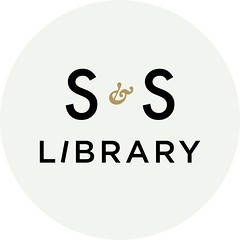 The Chicago Coin Club embarked on a field visit for their March 2024 meeting attending a presentation by club member Shanna Schmidt at the offices of Shanna Schmidt Numismatics Inc. It was a full house for Shanna's presentation on
The Chicago Coin Club embarked on a field visit for their March 2024 meeting attending a presentation by club member Shanna Schmidt at the offices of Shanna Schmidt Numismatics Inc. It was a full house for Shanna's presentation on The S & S Library, The Formation of a Numismatic Library.
As the saying goes, buy the book before the coin,
the favorite companion to any coin collection is owning books that provide a solid understanding of the collection. Most numismatists over time had some semblance of a library to reference coins, find pedigrees, or simply learn more about their origin. The S&S Library is the result of eight years of cooperation. Shanna's presentation laid out the assembling of the library, why it was created, and future ideas for its use. Club members spent time before and after the meeting viewing the stacks of historic books and catalogs finding publications dating back hundreds and hundreds of years.
During the presentation Shanna laid out the Evolution of the Library to house 8,776 individual books and growing. Sharing out of copyright
literature with the public and the NNP. The extensive process of book preservation through conservation and book binding for damaged or well-worn books. Expansion of the library to a second location in Chicago for needed extra space. Also, an impressive eight hundred (800) linear feet of catalogs with an emphasis on ancient coins.
Shanna then discussed why bother with a numismatic library discussing coin research being very important and is most effective with a book over surfing the web. Considerations of space and cost however can be a major factor. The presentation then evolved into Where to Start citing the ancient coin basics in Greek and Roman Republic, Roman Imperial and Byzantine plus sources with specializations in Jewish and Eastern coinage. Source examples for general reading on coins and collecting were given as the ANS, ANA, NMN, Numismatic Chronicle (RNS) Coin World magazines, Celator magazine among others.
Discussion of the importance of Auction Catalogs and how their use in uncovering past sales listings and coin pedigrees assist collectors in their pursuits. The presentation concluded with discussion and examples of Private Collections, i.e. Bunker Hunt Collection, Samuel Pozzi collection and Garrett collection. Then mention of Focused Die Studies and how many numismatic libraries can consist of specific die studies or analysis. For those with space and cost concerns a list of popular options was given including CoinArchives (for free) or the Pro-Version (an annual fee but with hammers), AC Search (image search), Newman Numismatic Portal, Academia.edu, Wikipedia.org, HathiTrust.org, JStor and Ebsco.org (for humanities) just to name a few.
The evening ended with showing several publications from the collection that club members passed around the room for examination. Books as small as the 3 inch by 4 inch Historisch - genealogischer Calender, oder Jahrbuch der merkwurdigsten neuen Welt - Begebenheiten fur 1784 Leipzig zur Messe bey Haude und Spener von Berlin
that contained images of the Continental Dollar and the large 14 x 20 Roman Republican Aes Grave from E. J. Haeberlin with amazing plates of early Roman cast coins and is considered a primary resource.
The Chicago Coin Club's motto DOCENDO DISCIMUS, meaning We Learn by Teaching
is practiced with educational featured presentations at each club meeting and this March meeting with the in-depth presentation of Numismatic literature was a prime example.
For more information on the Chicago Coin Club, see:
http://www.chicagocoinclub.org/
To read the earlier E-Sylum articles, see:
BCD CATALOGS ARRIVE IN CHICAGO
(https://www.coinbooks.org/v26/esylum_v26n52a07.html)
NNP TO DIGITIZE LITERATURE OF ANCIENT NUMISMATICS
(https://www.coinbooks.org/v26/esylum_v26n39a09.html)
S&S LIBRARY UPDATE
(https://www.coinbooks.org/v27/esylum_v27n09a08.html)
VOCABULARY TERMS: PHOTOETCHED, PHOTOETCHING
Here's another entry from Dick Johnson's Encyclopedia of Coin and Medal Terminology. -Editor
Photoetched, Photoetching. Etching from a master that is a black and white print whose design is a drawing and lettering that is typeset or drawn. Photoetched medals are flat two-dimensional designs (biplanar), sometimes made of two separate thin disks soldered to form a two-sided medal. In other instances a thicker piece of sheet bronze (or white metal) is photochemically engraved on both sides for obverse and reverse designs, but this must be done in very close register. This process is mechanical form of relief etching.
For production runs the photoetching is not done one design at a time, but by step-and-repeat of a camera; the design is exposed to the treated surface of the metal where many of the same images are burned into one side of a large sheet of metal. This side is then acid etched. After washing and drying the sheet metal, the back side is then treated to be exposed to the camera and the same number of reverse designs are burned into the back side. It is then acid etched on that side. The medals are then blanked and edge treated. See acid etching.
These photoetched or acid etched medals are then given a patina to highlight their design. A black paint or enamel is applied to the crevices and incuse areas (covering up the rough acid etched surface). The black is in contrast to the higher, untreated surface which is left its natural color: brown of bronze, or the gray of white metal.
As the need for photoengraving for the graphic arts field has diminished (by 1960s, replaced by offset lithography), the equipment for photoetching began disappearing fast. It is only needed for the small relief signs and nameplates by the end of the 20th century.
Photoeteched medals. In 1964 the Stafford Manufacturing Company of Brooklyn made a number of designs of photoetched medals for sale at the New York World's Fair. These included John F. Kennedy, Abraham Lincoln and a medal for the Illinois Pavilion. There are a number of varieties (with and without facsimile signatures) and the Kennedy is Rochette number K- 64-12).
Photoetched model. The firm of J.R. Pinches, London, made models from photographs or black and white drawings. One was the Liberation Medal for the State of Israel, 1958 (SM-1). In his catalog of the firm's production, John Harvey Pinches briefly relates the technology. The obverse and reverse designs (by Otte Wallish from a Roman coin) was photoetched oversize into steel. This was then hand engraved intaglio to create modulated relief. This negative steel served as the pattern to pantographically cut striking dies in two sizes: 27mm for the gold and 38mm for the silver.
References:
NC10 {1973} Haffner, p 158.
O42 {1987} Pinches, p 257.
To read the complete entry on the Newman Numismatic Portal, see:
Photoetched, Photoetching
(https://nnp.wustl.edu/library/dictionarydetail/516478)
ATLAS NUMISMATICS SELECTIONS: MARCH 24, 2024
Atlas Numismatics has updated their website with 268 new coins, medals, and tokens at fixed prices. Selections include the following items. -Editor
1078003 | GREEK. KINGDOM OF MACEDON. Demetrios I Poliorketes. (King, 306- 283 BC). Struck circa 294-293 BC. AR Tetradrachm. NGC MS (Mint State) Strike 5/5 Surface 5/5. Amphipolis mint. 25mm. 17.22gm. Nike standing left on prow of galley left, blowing trumpet she holds in her right hand and cradling stylis in her left arm / BA- SI?E-OS ?HMHTPIOY. Poseidon Pelagaios, nude, standing left, seen from behind, preparing to throw trident held aloft in his right hand, chlamys draped over extended left arm; tripod to left; to right, Z above ME monogram. Newell 94 (dies LXXXV/– [obv. die unlisted for issue, rev. die not known]); HGC 3, 1012f; Triton XXIV, lot 482 (same dies); Triton XXIII, lot 223 (same dies); Triton XIX, lot 102 (same dies); Triton XVII, lot 164 (same dies); CNG 106, lot 220 (same dies).
Beautifully toned.
$14,950
To read the complete item description, see:
https://atlasnumismatics.com/1078003/
1077960 | AUSTRIAN STATES. Salzburg. Sigismund III von Schrattenbach. (Prince- Archbishop of Salzburg, 1753-1771). 1756-Dated AV Medallic or Donative 6 Ducats. NGC MS61. By Franz Xaver Matzenkopf . Edge: Plain. 20.54gm. Bust, right; signed below truncation / CUIQUE – SUUM. Inscribed banner above a papal "Cappello Romano" (Cappello Saturno) or Roman hat above ornate shield of arms divides date below tassels. HZ 2887; Pr.-4151; Zöttl 2888.
These "donative" issues are listed by as commemorative issues; some donatives are
included in Friedberg as medallic coins and others are not (such as this piece).
$34,500
To read the complete item description, see:
https://atlasnumismatics.com/1077960/
1076855 | FRANCE. Napoleon I. (Emperor, 1804-1814 and 1815). An 13 (1804)-A
(rooster) AV 40 Francs. PCGS MS64.
By Droz. Paris. NAPOLEON EMPEREUR. Bust
left, signed below / RÉPUBLIQUE FRANÇAISE. Denomination within wreath. KM
664; Friedberg 481; Gadoury 1081; F.-537.
$22,500
To read the complete item description, see:
https://atlasnumismatics.com/1076855/
1077302 | GREAT BRITAIN. George III. (King, 1760-1820). 1811 AR Pattern Bank Dollar (5 Shillings & Sixpence). PCGS PR66DCAM (Deep Cameo). Bank of England. GEORGIUS III DEI GRATIA REX. Laureate and draped bust, left / BANK/ TOKEN/ 5S. 6D./ 1811. Denomination and date within oak wreath. Bull/ESC-1993 (R7, note "2 known").
Exceedingly rare type. Superb deep mirrored fields and heavily frosted devices; currently the only example graded in all grades at PCGS as of November 2023 and one of only two known according to Bull.
Ex. St. James's Auctions Ltd, Auction 18 (27 September 2011), Lot 323; Reportedly Ex.
Glendining, 25 October 1972, lot 55 (incorrectly described as type K/5A); apparently one
other example of this type is known (in Bristol Museum, Ex. Bowles collection).
$85,000
To read the complete item description, see:
https://atlasnumismatics.com/1077302/
1077200 | UNITED STATES OF AMERICA. 1909-D AV $10, Eagle. NGC MS64+
CAC.
By Augustus Saint-Gaudens. U.S. Mint, Denver. Edge: 48-raised stars. Liberty
wearing Native American war bonnet, left; 13-stars above and date below / UNITED
STATES OF AMERICA// IN GOD WE TRUST// E PLURIBUS UNUM// TEN
DOLLARS. Eagle standing, left; clutching branch and arrows. KM 130.
$19,500
To read the complete item description, see:
https://atlasnumismatics.com/1077200/
Updates to their online inventory are issued monthly. For more information and to sign up for the firm's monthly newsletter, visit: atlasnumismatics.com
ON THE RICHARD MARGOLIS COLLECTION
Stack's Bowers Senior Numismatist Greg Cohen published an article this week with a nice overview of the Richard Margolis collection. -Editor
Normally, this U.S. Coin of the Week space is reserved for a specific highlight; this week is different, as I take the time to do a walk through of the Richard Margolis Collection, Part I. By the time you peruse the 243 lots crossing the auction block in this session, you will note that this is something truly spectacular. The term once in a lifetime
is such a cliché, that in many cases, it has no meaning at all. However, an offering like the Richard Margolis Collection, which took a lifetime to create, is truly a once in a lifetime opportunity for serious numismatists and historians.
While I was contemplating what angle to take with this blog article, I sat down with Vicken Yegparian, and he told me to think of the Margolis Collection in circles. For those who did not know Mr. Margolis, he was a longtime dealer of world coins and medals. A Francophile, his area of specialty centered around the era of the French Revolution. Stack's Bowers Galleries will be offering the extensive collections of coins, medals, patterns, essays, and other French numismatic items spanning the final years of the Ancien Régime, the Constitutional Monarchy, the Directory, Napoleon, and the Restoration. Like many collectors who are also serious historians of the era they collect, Mr. Margolis' collection expanded outward to the medals of the French and Indian War, the American Revolution, and the personalities that inspired revolution in both America and France. Famed politicians, philosophers of the Enlightenment, and military leaders. These rings radiating outward from the core of French coinage. Our first offering of the Richard Margolis Collection is the American spiral if you will.
In the first ring of the spiral are the medals associated with the French and Indian War and American Revolutionary eras – namely Betts and Comitia Americana medals. Many of these have associations to the coins and medals of the French Revolutionary era that began less than a decade after end of the American Revolution. The most iconic of these is the silver Libertas Americana medal, graded MS-62 by PCGS. It is among the finest of this historically important creation, personally handled by Benjamin Franklin. However, this is not the most significant Comitia Americana or related medal offered here; that honor goes to the John Stewart at Stony Point medal, the only example confirmed to exist in private hands, and thus the key to the entire series. Of all the important Comitia Americana medals that have crossed the Stack's Bowers Galleries (and predecessor firms') auction block, this is the only fully formed example (the Ford Collection contained an obverse cliché in white metal that we sold in Ford XIV and then again in our November 2019 sale of the John Adams Collection, as lot 2028). There was another obverse cliché we sold in our 1991 Alto II sale, which is now a part of the National Numismatic Collection at the Smithsonian Institution.
Drawing another circle out we come to the famed portrait medallions of Jean-Batptiste Nini, who in American numismatics is best known for his terracotta portraits of Benajmin Franklin. This was a subject of significance for Mr. Margolis, and in 2015, Kolbe and Fanning published his beautifully illustrated opus Benjamin Franklin in Terra Cotta. However, Margolis's interest included portrait medallions of other late 18th-century notables, and these are also included in this auction.
But Jean-Baptiste Nini was not the only artist at the time working on portrait medallions, and Benjamin Franklin, being a particularly popular subject for such portraiture is well represented.
Many of these were executed by Wedgwood. The Wedgwood Company, though based in England, had a liberal spirit, and supported the cause of American Liberty, creating a series of their famed blue and white portrait medallions of American patriots such as Franklin and George Washington. Taking the Wedgwood circle
even further, you have portrait medallions in Wedgwood style of other patriots, as well as portraits that share subject matter with the Betts and Comitia Americana medals series, including William Pitt, Washington Before Boston, Johan Derk Van Der Capellen, William Penn, John Paul Jones, Captain James Cook, Admiral Keppel, and Admiral Rodney.
I hope this article has inspired you to take a closer look at the Margolis Collection, and perhaps pursue some items that otherwise would not have been on your radar. This is an incredibly significant opportunity for collectors to investigate the depth, breadth, and scope of numismatic and related historic artifacts related to the founding of the American republic.
To read the complete article, see:
THE RICHARD MARGOLIS COLLECTION PART I
(https://stacksbowers.com/the-richard-margolis-collection-part-i/)
To read the earlier E-Sylum article, see:
STACKS BOWERS OFFERS NINI TERRACOTTA PORTRAITS
(https://www.coinbooks.org/v27/esylum_v27n11a26.html)
FRANK S. ROBINSON 124TH AUCTION
Here's the announcement for dealer Frank S. Robinson's April 23, 2024 sale. -Editor
Dealer Frank S. Robinson will conduct his 124th mail and internet auction of Ancient and Early Coins with a closing date of April 23. The sale will include 585 lots, low minimum bids, and bids to be reduced as competition permits. Robinson notes that reductions have averaged 15-20% in his recent sales. There is no buyer fee.
Featured in this sale is a further segment of a major collection of Judaean and Judaic related material, including some rare and important items, such as a Bar Kokhba Zuz with grapes/lyre in AEF.
Greek coins include a slabbed EF Armenian Trigranes II Tetradrachm; several classic Athenian Owl
tetradrachms in choice quality; an AEFVF Baktrian Tetradrachm of Euthydemos I; a rare Elymais silver Tetradrachm of Kamnaskires V in Choice EF; a VF archaic Kaulonia stater; an unusually choice Mint State coin of the last Parthian ruler, Artabanus VI; and a rare EF Tetradrachm of Vadfradad I of Persis. There is also a special selection of the tiniest Greek coins.
Among Roman coins there is a nice VF Quadrigatus, an EF Germanicus As, a VF-EF Dupondius of Antonia, an EF Faustina Senior Sestertius, and a Choice VF Sestertius of Maximus.
This sale will also feature early Chinese coins, Russian, Byzantine and other early coinages, group lots, literature, and a section of items offered at fixed prices.
Robinson holds about three auctions annually, and tries to offer a broad range of material for advanced collectors as well as bargain hunters. Catalogs are free; contact Robinson at Box 8600A, Albany, NY 12208; phone 518-482-2639; e-mail frank@fsrcoin.com. The full catalog is at his website, www.fsrcoin.com.
THE BRUUN COLLECTION OF WORLD COINS
This announcement from Stack's Bowers Galleries previews their upcoming sale of the Bruun collection of some 20,000 world coins. Amazing. -Editor
Stipulated by Bruun's Will to Be Sold at Public Auction a Century After His 1923 Death
In a much-anticipated event a century in the making, the extraordinary coin, medal, banknote, and book collection of Danish industrialist Lars Emil Bruun (1852-1923) is finally set to be sold in a series of auctions spanning several years. Commencing in fall 2024, Stack's Bowers Galleries will present at public auction this prized collection of Scandinavian coinage.
The collection, painstakingly assembled by this prosperous Danish butter merchant beginning as a boy in the 1850s and over the decades that followed, has remained essentially intact, unlike those of his contemporaries, which have long since been dispersed. Thanks in part to a unique and highly peculiar testament of his will, the L. E. Bruun Collection has been safeguarded for a century as a reserve for the Royal Danish Coin and Medal Collection. It first found refuge within the walls of Frederiksborg Castle, formerly a royal residence, before finding its way to the Danmarks Nationalbank (Danish Central Bank) in Copenhagen.
Since 2011, nearly 20,000 meticulously arranged items, housed within four grand custom-made cabinets (as they were at Mr. Bruun's demise in 1923), have remained securely stored in a secret location, insured for 500,000,000 Danish kroner (approximately USD 72,550,000). The world awaits as the L. E. Bruun Collection, poised for its transformation from a Danish national treasure into an international marvel, emerges from its century-long slumber and takes its place as the most valuable collection of world coins and medals ever to cross the auction block.
Deeply moved by the devastation he witnessed during World War I and fearing a new war or bombing of Copenhagen, L. E. Bruun left exacting instructions in his will for his collection: For a period of 100 years after my death, the collection shall serve as a reserve for the Royal Coin and Medal Collection in Copenhagen in the sense that if it should be substantially destroyed by fire or lost by theft or other such event, my collection shall be offered to the State as a gift.
However, should the next century pass with the national collection intact, it shall be sold at public auction and the proceeds shall accrue to the persons who are my direct descendants.
On November 21, 2023, that moment arrived as the final provision of the will came into force. This released for auction nearly 20,000 coins, medals, and paper currency pieces from Denmark and related territories, Norway, Sweden, as well as medieval coins from the era when Danish kings ruled in England.
Henrik Holt Christensen, Senior Director of Consignments at Stack's Bowers Galleries, remarked: As a native of Denmark, I am overjoyed that Stack's Bowers Galleries has been entrusted with this prestigious task — a dream of mine since my early days as a coin enthusiast. Upon viewing the collection firsthand, I was struck by its sheer diversity and quality, offering a comprehensive narrative of Scandinavian monetary evolution. From entry-level pieces to exceedingly rare treasures that are the finest quality in existence, Bruun's collection encapsulates Scandinavia's millennium-long numismatic journey.
The assembly of the world's greatest collection of Scandinavian coinage demanded perseverance, dedication, time, and, above all, substantial financial resources. Lars Emil Bruun, a trailblazer in the preservation, canning, and exportation of premium Danish butter, established a global enterprise that propelled him to immense wealth. His affluence enabled him to ardently pursue his hobby, participating in the numismatic community, engaging in auctions, and amassing an exquisite specialized library. Bruun's considerable riches, derived from his butter empire and astute real estate ventures, facilitated not only the acquisition of individual coins but also entire collections.
We at Stack's Bowers Galleries are honored to be entrusted with Bruun's numismatic legacy after a century-long wait,
said Brian Kendrella, President of Stack's Bowers Galleries. Auction houses from around the globe pursued the opportunity to present these coins. The legendary expertise of our team, our international reach, and our record of success with famous specialized cabinets of diverse numismatic items will enable us to showcase this collection in a way that will secure Bruun's name among the most important coin collectors of all time.
Further details regarding the auction schedule and global exhibitions featuring the L. E. Bruun Collection will be posted at www.StacksBowers.com.
What amazing foresight. While great collections often stay off the market for years and decades, a century-long hibernation is quite unusual. We'll look forward to learning more details of the collection and associated numismatic library. -Editor
To read the complete article, see:
The Most Valuable Collection of World Coins to Ever Come to Market
Stipulated by Bruun's Will to Be Sold at Public Auction a Century After His 1923 Death
(https://stacksbowers.com/stacks-bowers-galleries-selected-to-auction-the-l-e-bruun-collection/)
WAYNE'S NUMISMATIC DIARY: MARCH 24, 2024
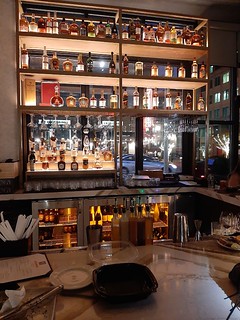 Tuesday, March 19, 2024 brought the monthly dinner of my Northern Virginia Numismatic Social group Nummis Nova. Eric Schena was our host. Inspired by a great experience at the Token and Medal Society banquet at the Pittsburgh ANA last year, he'd made a reservation at the Reston Fogo de Chão Brazilian Steakhouse.
Tuesday, March 19, 2024 brought the monthly dinner of my Northern Virginia Numismatic Social group Nummis Nova. Eric Schena was our host. Inspired by a great experience at the Token and Medal Society banquet at the Pittsburgh ANA last year, he'd made a reservation at the Reston Fogo de Chão Brazilian Steakhouse.
As usual, as number of great numismatic items were passed around the table before dinner. My only contribution was this new $20 Star note that I'd gotten from an ATM recently.
Tom's Take
Tom Kays submitted these notes from his end of the table:
Fresh Meat
you say? Where can one sample shish-kebobbed hunks of steak, prime ribs,
chicken, pork, and sausage, served with dramatic flair, fresh from open pit flames, skewered on
Spanish rapiers, and delivered to your plate without cease, until you declare yourself utterly
and completely full, unable to even taste the next delicacy? Fogo de Chao Brazilian Steakhouse
in Tysons/Reston, Virginia is just such a venue where a happy dozen Nummis Nova folks went
to dine in March and received the full experience
meaning all-you-can-eat, and then some.
Nummis Nova Guest Dana Linett carves a wee bit more from a garlic roast as Jon looks on undecided about whether he too wants to partake of a hunk of the same goodness Nummis Nova regulars at table include Steve, Jon, Wayne, Mike, Jonas, Lorne, Dave, Eric, Chris, and Julian with Tom off screen, operating the camera.
Discussion at my end of the table centered around the recent coast-to-coast relocation of Early American History Auctions, Inc., from San Diego to Winchester, Virginia. Dana Linett brought new auction catalogs for all, as he re-establishes his colonial American auctions on the east coast. Dana exclaimed the very first street in America named for George Washington in the 1750s is in Winchester, and honors Washington as a colonel in the British Provincial Militia, Virginia Regiment, under Virginia's Royal Governor Robert Dinwiddie. Young Washington was a brigade commander assigned to protect the Ohio Company settlement at Fort Duquesne from the French and he won honors at the Battle of the Monongahela to become defender of the Virginia frontier by 1758.
A few of the show-and-share items seen at table were obtained from another colonial coin dealer still in
San Diego, Jeff Rock of Rosa Americana, Ltd., who wrote that perhaps these items will be shared at one
of your dinners that Wayne writes about (and which I am highly jealous of, as we have nothing like that
out here on the west coast!)
Shared they are, within these recollections of what passed by, in between
the many skewers of meat, and impending food coma
down at my end of the table. I saw in this
order:
-
 The newest Early American History Auctions, Inc., Catalog, closing March 30, 2024 with
Autographs – Colonial- Americana – Political Items
The newest Early American History Auctions, Inc., Catalog, closing March 30, 2024 with
Autographs – Colonial- Americana – Political Items
- A written invitation to attend a talk about Papal and Vatican Coins by Mike Markowitz, to be held on April 20, 2024 at 5:00 PM at the Knights of Columbus Hall, 3700 Blenheim Blvd in Fairfax, Virginia;
-
A hand-minted, replica of a golden aureus of Licinius I, Gaius Flavius Valerius Licianus (308 – 324
AD) with original wrapping from Varna, Bulgaria that states
this is not a monument of culture and can be exported out of the territory of Bulgaria.
Lacking its wrapping one would need to determine that this replica coin does not correspond to the original's metal composition, weight, and size; - A brilliant uncirculated pair of 1872 San Francisco Mint Half Dimes with mint marks above and below the wreath;
- An 1886 Harvard Banjo Club metal inscribed on the reverse;
- A large silver George III, 50th Year of Reign Medal (Oct 25, 1810) by Frogmore;
- A Ricketts's Circus token struck by the U.S. Mint;
- A large silver medal for the marriage of Mary, Queen of Scots to Francis of France - ‘Fecit Utraque Unum' in 1558;
- A Port Byron, one ‘New York' shilling (twelve and a half cents) note of 1838, signed by Smith and Case;
-
An amazing and hefty, three-dimensional, gold tone
Futur-o-scope
medal of European lineage; - A 2023 Cook Islands Twenty-Five Dollars medallion of King Charles III with three-dimensional topography of the Grand Canyon National Park;
-
A nicely
blue toned,
uncirculated 1831 Bust Half Dollar; - A proof, 1878 U.S. Trade Dollar from Philadelphia;
-
An enigmatic and low-mintage Finnish Medal
PP-71
that defies conventional description unless its bringer deigns to share more about it; - A challenge coin for Equilpse – Dennis Kelly, CEO;
- A book: Strawberries, Peas & Beans – Truck Farming in Anne Arundel County by Willard R. Mumford with catalog of the local picker's checks.
As usual, the night passed by much too fast, and once the food coma
hit us, stuffed with exotic meats,
and rendered sleepy with digestion, many of the questions we might have posed down the far end of
the table about the significance of the things others brought were quelled into a contented repose. This
after-action report
provides an opportunity for attendees to better explain their choices, and perhaps
send explanatory material and better photos of all the exotic menagerie of items deemed worthy of
showing and telling about, at this Nummis Nova dinner.
For example, here is a small, wooden artifact case with a wide variety of early coins, tokens and medals
that also passed by at dinner. Here are numismatic items associated with the following names given in
no particular order: Maximillian Gandolf,
Guttag,
Van de Passe,
Pidcock,
Bolen,
Sansom,
Augustine Iturbide,
J. Randel,
Q. David Bowers,
Sarah Caroline Seymour,
and the mints at
Philadelphia, Potosi, Lima, and Guanajuato. If this passed under your nose during dinner, while you
were otherwise occupied masticating and couldn't speak with adequate decorum, what questions would
you have regarding the identity, significance, and special importance of any of these items drifting down
from the far end of the table? They all have a story to tell, but it is often hard to communicate at length
and enjoy your dinner simultaneously.
As one who sits at the very far end of a virtual Nummis Nova table, what did you just see pass by under typical mood lighting in the restaurant? I would say feel free to open the case, but you decide to avoid any butter fingers incidents and graciously decline to do so? Thanks!
Photos
Here are some of the photos I took of the evening.
Now for more about this month's numismatic show-and-tell items.
Ricketts's Circus Token
Dave Schenkman brought the Ricketts's Circus piece, and provided these photos.
Very cool item. "It is said that Washington frequented this circus as a place of amusement.".
To read earlier E-Sylum articles, see:
RICKETTS'S CIRCUS TOKEN BUYERS SOUGHT
(https://www.coinbooks.org/esylum_v18n01a11.html)
THE MCA ADVISORY CIRCUS ISSUE
(https://www.coinbooks.org/esylum_v18n16a07.html)
More From Dave Schenkman
Dave writes:
"Some time back I brought a Harvard Banjo Club medal to the dinner. This one is quite a bit different. The name G. Sturgis is engraved on the reverse, and the year '13. Although the pics make it appear to be brass, it is silver. 44mm."
"A 48mm silver medal commemorating the 50th anniversary of the reign of George III. Eimer 1007."
"A 52mm silver medal dated 1558, for the marriage of Mary, Queen of Scots to Francis. Per Eimer, who lists it as # 40, "first struck in 1832 at the Paris Mint and subsequently restruck."
The Grand Canyon and More
Steve Bishop sent these photos of some of his items. The Grand Canyon piece is an interesting example of medal-making technology.
Great proof Trade Dollar.
Whitman Baltimore Coin Expo
Tuesday's dinner was great, but the week held more numismatics in store.
Friday the 22nd brought an afternoon at the Whitman Baltimore Coin Expo. As usual, I wandered around hoping to speak with and thank our E-Sylum advertisers. But as often happens I was foiled by commercial activity - Tom Caldwell of Northeast Numismatics, David Kahn of David Kahn Rare Coins, Jeff Garrett, Jon Sullivan, Wayne Herndon of Wizard Coin Supply and others were all either busy with a customer or away from their tables when I passed by. I did get to briefly say hello to Julian Leidman and Charlie Davis.
At Charlie's booth I ran into Kellen Hoard, and we had a nice conversation with Neil Musante. Not long after I parked myself at John Kraljevich's table where Greg Bennick and I discussed his interviews for the Newman Numismatic Portal. A few more past interviews are "in the can" awaiting transcription and publication here in The E-Sylum. Having been sidelined from numismatics for some months while he finished up a book for his publisher, Greg's ready to get back to work on these. We discussed a number of potential interview candidates and topics.
We also chatted about a number of numismatic topics and after hearing some of my stories, Greg now wants to interview me, too. That will be fun. I used to be the young kid in the room like Kellen and JK before him, but now I'm Medicare-card-carrying official old-timer. I was fortunate to meet a number of now-deceased hobby luminaries over the years, including Eric Newman, John J. Ford Jr., Jules Reiver, John Pittman, and bibliophile Armand Champa.
Sitting at John's table is like hanging around Times Square in NYC - the whole world passes by sooner or later. Spotted nearby at various times were Vicken Yegparian, Maureen and Stu Levine, Bruce Hagan, Dana Linnett, and Harry Laibstain. On my way out I was able to talk for a while with Pierre Fricke.
Without dinner plans I headed home and despite the I-95 rush hour traffic managed to have dinner at home in Virginia with my family. It was another fun and productive week for numismatics.
To read the earlier E-Sylum article, see:
EAHA OFFERS ADM. MIDDENDORF COLLECTION
(https://www.coinbooks.org/v27/esylum_v27n10a18.html)
BALLOT BOX ON ROMAN COIN
This article discusses voting in Roman times as depicted on a coin, whose image was provided by the American Numismatic Society. -Editor
This silver denarius, minted over 2,000 years ago, is hardly the most attractive Roman coin. And yet, the coin is vital evidence for the early stages of a political struggle that culminated in Caesar's assassination and the fall of the Roman Republic.
I first encountered this coin while studying Roman history in graduate school. Its unusual design gave me pause – this one depicted figures walking across a narrow bridge and dropping something into a box. I moved on after learning it depicted voting, reasoning that Roman mint officials occasionally made idiosyncratic choices.
But as voting access evolves in the U.S., the political importance of this centuries-old coin seems more compelling. It turns out that efforts to regulate voting access go way back.
Voting was a core feature of the Roman Republic and a regular activity for politically active citizens. Men, and only men, could vote in multiple elections and legislative assemblies each year. So why would P. Licinius Nerva, the official responsible for this coin, choose to depict such a banal activity?
The answer lies in voting procedures that sometimes heavily favored elites.
... written ballots made it more difficult for elites to influence voting but not impossible. Each unit formed its own line leading to a bridge where voters received ballots to mark and place in a basket. Elites could station themselves or their allies on the bridge to encourage people to vote the right
way.
 The reverse of Nerva's coin depicts the reception and deposit of the ballot, the first and last moments of a voter's time on the bridge. The absence of nonvoter figures on the coin, apart from a poll worker, is key to understanding its message.
The reverse of Nerva's coin depicts the reception and deposit of the ballot, the first and last moments of a voter's time on the bridge. The absence of nonvoter figures on the coin, apart from a poll worker, is key to understanding its message.
In 119 BCE, a young politician named Gaius Marius passed a law that narrowed voting bridge widths, allowing voters to mark their ballots without elites looking over their shoulders. Nerva's coin, minted six or seven years later, almost certainly refers back to this law. By showing only voters on the bridge, Nerva was celebrating an important voting rights victory and announcing his allegiance to Marius.
The aristocrats never managed to repeal the voting laws and were still grumbling about them even as the Republic collapsed.
The long Roman struggle over voting procedures provides a useful and perhaps even comforting reminder. Changing state voting laws and election lawsuits are nothing new. The fight over voter access to the ballot is an inevitable side effect of democracy.
To read the complete article, see:
Ancient Rome successfully fought against voter intimidation - a political story told on a coin that resonates today
(https://theconversation.com/ancient-rome-successfully-fought-against-voter-intimidation-a-political-story-told-on-a-coin-that-resonates-today-222967)
GRIFFINS ON ANCIENT COINS
Mike Markowitz published a CoinWeek article about griffins on ancient coins. Great topic! Here's an excerpt - see the complete article online. -Editor
THE GRIFFIN (gryps in Greek) IS a mythical beast with the head and wings of an eagle and the body of a lion. Long before the emergence of coinage in the seventh century BCE, griffins featured prominently in the art of ancient Greeks, Egyptians, Babylonians, and other peoples. As guardians of treasure, griffins were a particularly appropriate symbol for coins, and they appeared very early in numismatic history. A griffin adorns the reverse of the current record holder for the highest price ever paid for an ancient coin.
Kyzikos
Mysia, Cyzicus Electrum Stater circa 500-450 BCE. Image: Numismatica Ars Classica.
The city of Kyzikos (or Cyzicus) on the Sea of Marmara, prospered by harvesting the annual migration of tuna fish between the Mediterranean and the Black Sea. The fish appears as an emblem on the city's lumpy electrum staters (which circulated widely in the ancient world) with designs that changed annually. On one type, dated to c. 500-450 BCE, we see a roaring griffin standing on the fish, with one paw raised.
Mysia, Kyzikos EL Stater. Circa 400-330 BCE. Image: Roma Numismatics.
A century later, the coins were still lumpy(ish), but the designs were far more ambitious and the sculptural quality of the engraving was remarkable. An electrum stater dated to c. 400-330 BCE shows the muscular god Apollo riding on the back of a griffin in flight, his arm around the beast's neck. This griffin has the head of a leopard, a common variation of how the creatures were depicted.
Teos
Ionia, Teos Silver Stater. Circa 478-449 BCE Image: Roma Numismatics.
Teos (near modern Sigacik, Türkiye) was one of the 12 cities that made up the Ionian League
. Teos adopted the griffin as its civic emblem. A silver drachm in fine archaic style (c. 510-500 BCE) shows a griffin with curved wings raising one paw. A generation or two later (c. 478-449), a silver stater in richly detailed classical style bears an elegant crouching female griffin.
To read the complete article, see:
Griffins on Ancient Coins
(https://coinweek.com/griffins-on-ancient-coins/)
THE KWANGTUNG FIVE GOATS
CENT PATTERN
Stack's Bowers Numismatist Nicholas Fritz published an article about a rare Chinese pattern coin, the Kwangtung Five Goats
piece.
-Editor
In the classic Chinese coin series, gold and silver issues often get a disproportionate amount of the shine and collector interest. This, however, distracts from the interesting copper issues of this period. There are copper issues that occasionally reach out and grab attention. To this group, lot 40086, a Kwangtung Five Goats
Copper Cent Pattern from Year 25 Graded Specimen-64 Brown by PCGS, certainly belongs.
The intriguing motif features five goats grazing on a pastoral landscape, with mountains rising in the background. The reverse provides a simplistic rice stalk, standing in juxtaposition to the intricate and ornate reverse. This Pattern was produced under the aegis of Governor Chen Chi-T'ang, the military ruler of Kwangtung immediately preceding the outbreak of war with Japan. Known as the celestial king
in the South of China where he held sway, Chen sought to modernize China and introduced schools and universities in Kwangtung. Among the jockeying for power in China and to maintain his position, Chen attempted to balance the Nationalistic Government forces against the growing Communist front. This left him vulnerable, and after his biggest supporter, Hu Hanmin, died in 1936 Chen sought to overthrow the Nationalist government. This was a miscalculation, as the rising Japanese threat led other provincial powerbrokers to align with the government and Chen was forced to flee to Hong Kong.
Given the ouster of Chen, this piece never reached full production, and is only known as a pattern. This is only our fourth offering of this type, with the last being in our 2018 offering of the Q. David Bowers Collection of Chinese Cash coinage. That specimen, graded a very similar Specimen-64+, reached a final price of $48,000, and this example figures to approach that number. As one of the finest pieces of medallic artistry in the classic Chinese series, we expect much excitement for this example.
To read the complete article, see:
STACK'S BOWERS AND PONTERIO TO OFFER 5 GOATS IN APRIL HONG KONG AUCTION
(https://stacksbowers.com/stacks-bowers-and-ponterio-to-offer-5-goats-in-april-hong-kong-auction/)
WWII GHOST ARMY CONGRESSIONAL GOLD MEDAL
Many thanks to the Ghost Army for their important work, and kudos those who championed their medals. Here's an excerpt from a New York Times article about the recent presentation ceremony. -Editor
 For most of his life, Bernie Bluestein was not allowed to say anything about what he did during World War II in Western Europe.
For most of his life, Bernie Bluestein was not allowed to say anything about what he did during World War II in Western Europe.
Mr. Bluestein was a sophomore at Cleveland School of the Arts in 1943 when he left to join the U.S. Army. He then trained in a secret unit that landed at Normandy, France, shortly after D-Day in June 1944.
What we did is we attracted the Germans' attention so that the real units could do whatever they had to do elsewhere,
Mr. Bluestein, age 100, said in an interview.
In his final mission, Mr. Bluestein said, the ruses devised by the roughly 360 soldiers of his battalion forced German commanders to spread their defenses thin in eastern France. That, he said, allowed the U.S. Army's 90th Division — which was actually 10 miles north of the 603rd — to cross the Rhine River with less resistance.
We saved the lives of about 30,000 soldiers,
Mr. Bluestein said.
The 603rd and similar units came to be known as the Ghost Army,
which numbered about 1,100 troops. Together, they inflated rubber tanks, created fake airfields, blasted the sounds of troops marching from speakers placed on trucks and designed other diversions to fool German soldiers.
The mission of these lightly armed soldiers, who were a precursor to the Army's current psychological warfare units, was officially declassified only in 1996.
On Thursday, Mr. Bluestein and two other members of the Ghost Army — Seymour Nussenbaum, age 100, and John Christman, 99 — received the Congressional Gold Medal on Capitol Hill before a crowd of more than 600 that included family members and friends.
Getting the Congressional Gold Medal for the soldiers took years of work, much of it initiated by Rick Beyer, a film producer. He learned about the unit 19 years ago from a friend's colleague who said someone should make a documentary about them.
It took us four sessions of Congress to do it, and it took a whole team,
Mr. Beyer said in an interview. We had 40 or 50 people who were volunteer lobbyists. They were emailing. They were calling. They were visiting offices in person. Covid hit in the middle of that, but we readjusted our way of doing things and kept going. And by God, we made it happen.
Here's some more from a National Public Radio piece. -Editor
 "Following the war, the unit's soldiers were sworn to secrecy, records were classified and equipment packed away," says the National WWII Museum.
"Following the war, the unit's soldiers were sworn to secrecy, records were classified and equipment packed away," says the National WWII Museum.
Wormuth said Thursday that immediately after the war, Ghost Army soldiers received a letter of thanks from then-Gen. Dwight Eisenhower, with a memorable P.S.: "If you tell anyone, I'll see that you hang."
Beyer told WUNC before the ceremony that the mission had been so deeply classified that the "Army basically lost it."
"It kind of forgot about it until the late 80s, when they suddenly rediscovered this and started bringing Ghost Army soldiers to the Pentagon for briefings," he explained.
"One of my favorite lines was one gentleman who only would tell his family 'I blew up tanks,' without saying they were inflatable tanks," she said on Thursday.
To read the complete articles, see:
At Long Last, a Gold Medal for America's World War II ‘Ghost Army'
(https://www.nytimes.com/2024/03/21/us/ghost-army-gold-medal.html)
After decades of secrecy, the 'Ghost Army' is honored for saving U.S. lives in WWII
(https://www.npr.org/2024/03/21/1239871379/ghost-army-congressional-gold-medal-world-war-2)
SERIES 1934 C $20 BILL TURNS HEADS
From Reddit to Newsweek to your E-Sylum comes this story of an old $20 bill that turned heads on social media after being spit out by an ATM. -Editor
An ordinary ATM withdrawal turned into something extraordinary after a Massachusetts man withdrew a $20 bill with a difference.
In a Reddit post shared under the handle IBOB617, a man who told Newsweek his name was Ronald McKernan revealed how a trip to the ATM to pick up some cash to spend on vacation took an unexpected turn.
Looking through the $100 he had withdrawn, McKernan immediately spotted something was amiss. "There was one really old dollar among a bunch of very new ones," he told Newsweek. That "really old" note turned out to be really old indeed, dating all the way back to before 1950.
He posted a picture of the bill to Reddit, where it was upvoted over 20,000 times, sparking much discussion in the process.
One Redditor even appeared to have nailed down a rough date for when the bill was likely first put in circulation. "The Series 1934C bills were printed between July 1946 and May 1949," they wrote.
Some pondered whether money this old could still be used.
Numismatists know that "really old" note is nothing rare or special, but it's nice to see people taking notice. Thankfully the Newsweek coverage was a just-the-facts approach without a made-up outrageous valuation. -Editor
To read the complete article, see:
Man Spots Something Very Unusual About $20 Bill He Draws Out of ATM
(https://www.newsweek.com/man-spots-something-unusual-20-dollar-bill-atm-1878704)
THE EAST AFRICAN FIVE SHEAFRA
Kavan Ratnatunga passed along this BBC article about a currency hoax that went viral on social media, Thanks! -Editor
To the casual observer, it seemed like the long-cherished dream of a new single currency for East Africa had come to fruition.
An account on X, called "Government of East Africa", complete with a grey tick suggesting it was the real deal, released an image of a specimen note worth five sheafras, featuring a coat of arms and a space for a signature from a central bank governor.
The name sheafra was coined by combining shilling of East Africa and franc - currencies in use in the region.
The original posts from last Sunday were viewed more than a million times, going viral after being picked up by major blogs and at least one popular online media outlet in Kenya. It was reported as a launch.
The truth was still putting its shoes on as the apparent news of the single currency spread.
Some enthusiastically welcomed the idea, while others debated the name and the design.
Finally, the East African Community (EAC) - a bloc of eight countries - stepped in to say it was not true.
The man behind what turned out to be a fake single currency said he was surprised at how the news spread and the attention it received.
Ugandan Moses Haabwa told the BBC that he wanted to offer hope to people in the region.
He is the self-styled overseer of what he calls the "Federal Republic of East Africa Government", which does not exist.
To read the complete article, see:
Ugandan man behind viral fake East African currency shocked by its success
(https://www.bbc.com/news/world-africa-68499438)







